Dieser Artikel ist auch auf Deutsch verfügbar. Click here to find out more about Spain!
Montserrat – not to be confused with the island in the Caribbean of the same name – is a big mountain range in Spain. It starts about 50 kilometers from Barcelona and rises to over 1200 meters above sea level. Montserrat not only houses the famous Benedictine Monastery of Santa Maria de Montserrat, but also offers four beautiful hiking routes of varying degrees of difficulty with great views of the surrounding area.
The mountains consist of pink sedimentary rocks which were still located below sea level until a few million years ago. Erosion gave the rocks a strangely “ragged” silhouette, somehow similar to a saw. That’s where they name comes from: “Montserrat” means “Sawed Mountain” in Catalan.
Getting to Montserrat is very easy because the starting point – the monastery – is a world famous, extremely well connected pilgrimage site. If you have your own (rental) car, you can park within walking distance of the entrance for six Euros per day. If you travel by public transport, take the R5 regional train from Barcelona to Monistrol de Montserrat and then the cable car or the cog railway.
You can also hike from the valley to the monastery in about one and a half hours. The paths are only badly marked and quite demanding, though.
The cog railway, the Cremallera de Montserrat, was built in 1881. At peak times up to eight steam locomotives operated on the line at the same time. During the Second World War visitor numbers dropped sharply. Operation was no longer economic, and in 1953 a serious accident sealed the fate of the company. The line was shut down in 1957 and only reopened in 2003.
The ride to the top takes just under 20 minutes. The timetables are divided into four different seasons and can be quite confusing. You should definitely make sure not to miss the last train down, during the low season operations may be shut down as early as 18:00 clock.
A one-way ticket costs 6.60 Euros during low season (January to March, last week of October to New Year), and a round trip is 11 Euros. During the high season ticket prices rise to 7.20 and 12 Euros, respectively. But you can get away much cheaper with combined tickets for the regional train and rack railway. These can be bought in various places, e.g. at the train station in Barcelona.
The Aeri de Montserrat cable car takes pilgrims to the monastery since 1930 without interruptions. It does not depart from the train station in Monistrol like the cog railway, but from the eponymous “Aeri de Montserrat” train stop shortly before Monistrol.
A single ride on the cable car costs 7.50 Euros for adults, the round trip is 11.50 Euros. The journey takes just under five minutes. During peak times the cable car runs every five minutes, so basically non-stop.
Monastery, Basilica and Black Madonna
Houses of worship had been built in the Montserrat mountains since before the birth of Christ. The Romans for example built a temple for the goddess Venus here. In the year 718 a statue of St. Mary which had allegedly come from Jerusalem, the Virgin of Montserrat, called Mare de Déu de Montserrat or La Moreneta (The Little Dark One) in Catalan, was allegedly hidden in Montserrat from the Arabs on the Iberian Peninsula.
According to the legend, around the year 880 a group of shepherd boys re-discovered the statue in a cave. The bishop wanted it to be transferred to Manresa, but the statue was supposedly too heavy to be taken away. This was interpreted as the wish of Saint Mary to stay in this place. The Benedictine Abbey Santa Maria de Montserrat was then supposedly built around the statue starting from the 11th century. Several extensions followed, including the construction of a large Basilica. Around 80 monks have lived in the monastery at all times.
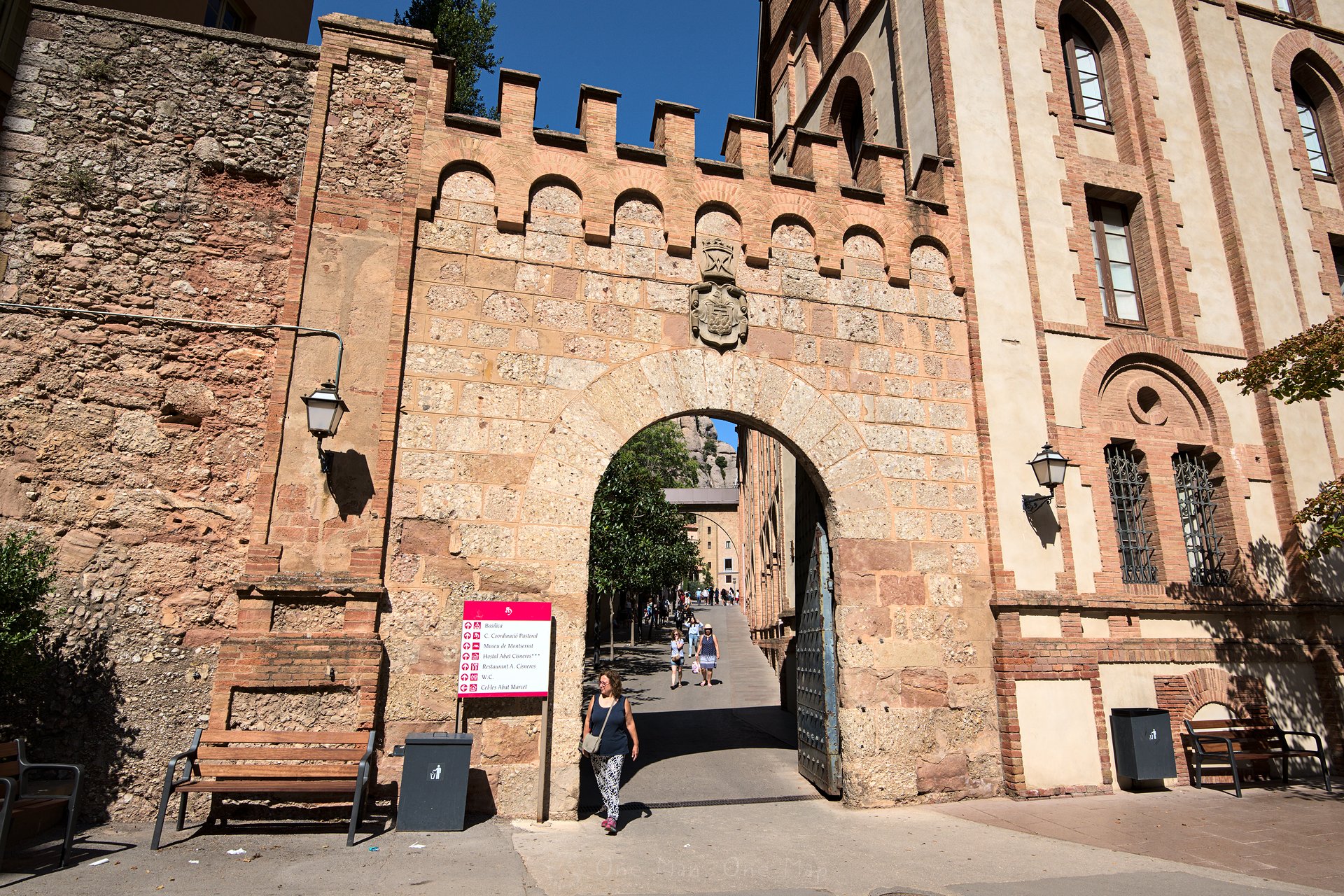
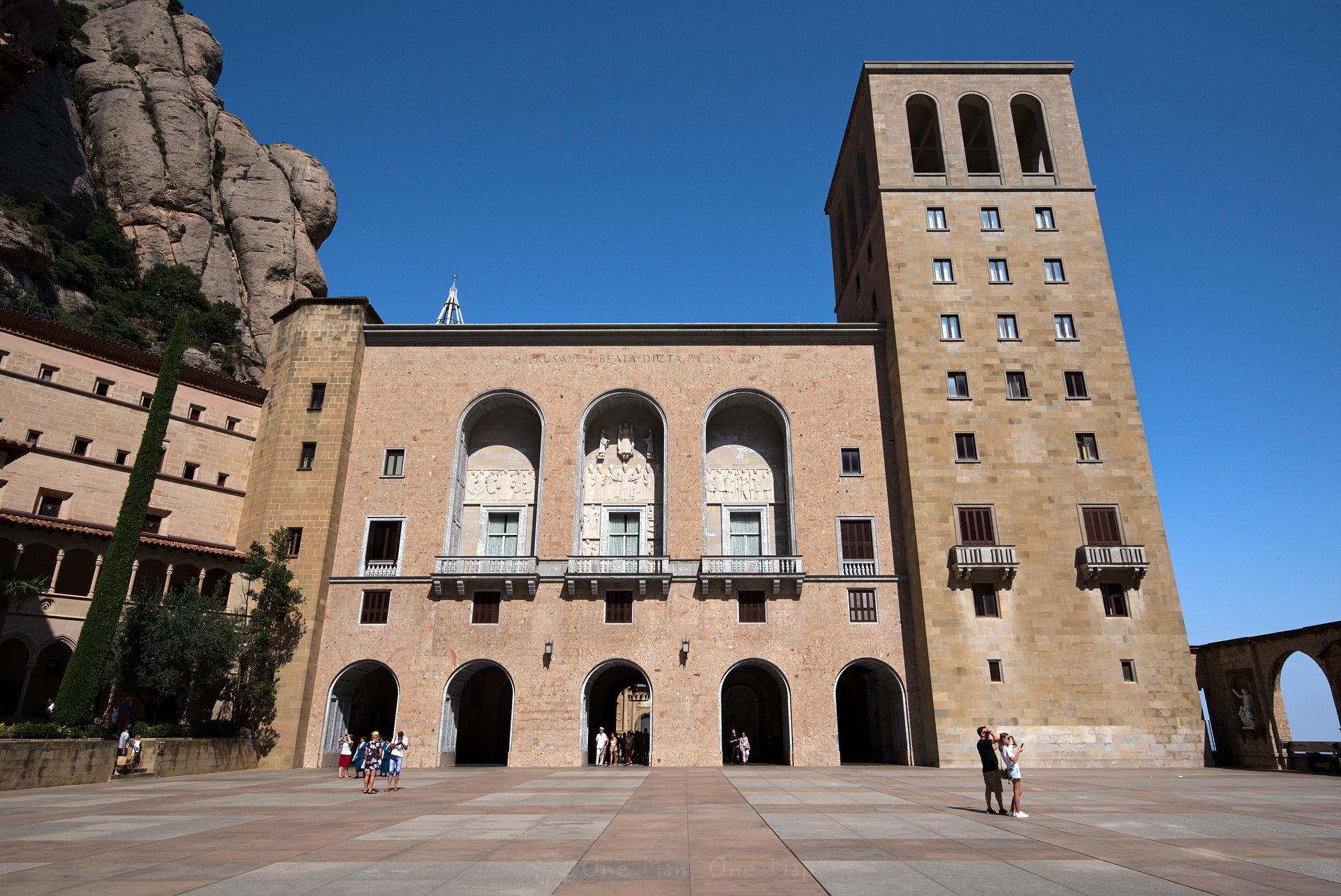
Everything looks quite new, and this impression is correct. The monastery has been destroyed several times over the centuries. The last reconstruction dates back to the period after the Spanish Civil War, so between the 1950s and 1960s.
The Basilica is of impressive size and beautifully decorated inside. The Statue of the Virgin of Montserrat can be seen through a hole above the altar, but it is almost always hidden behind a never-ending stream of pilgrims.
The access to the Black Madonna goes through a side entrance. St. Mary is the patron saint of Catalonia, and it is said that every faithful Catalonian tries to make a pilgrimage to Montserrat at least once a year. If there is a big crowd, you may stand in line for up to 45 minutes.
Entrance to the church and the Madonna is free, but donations are appreciated.
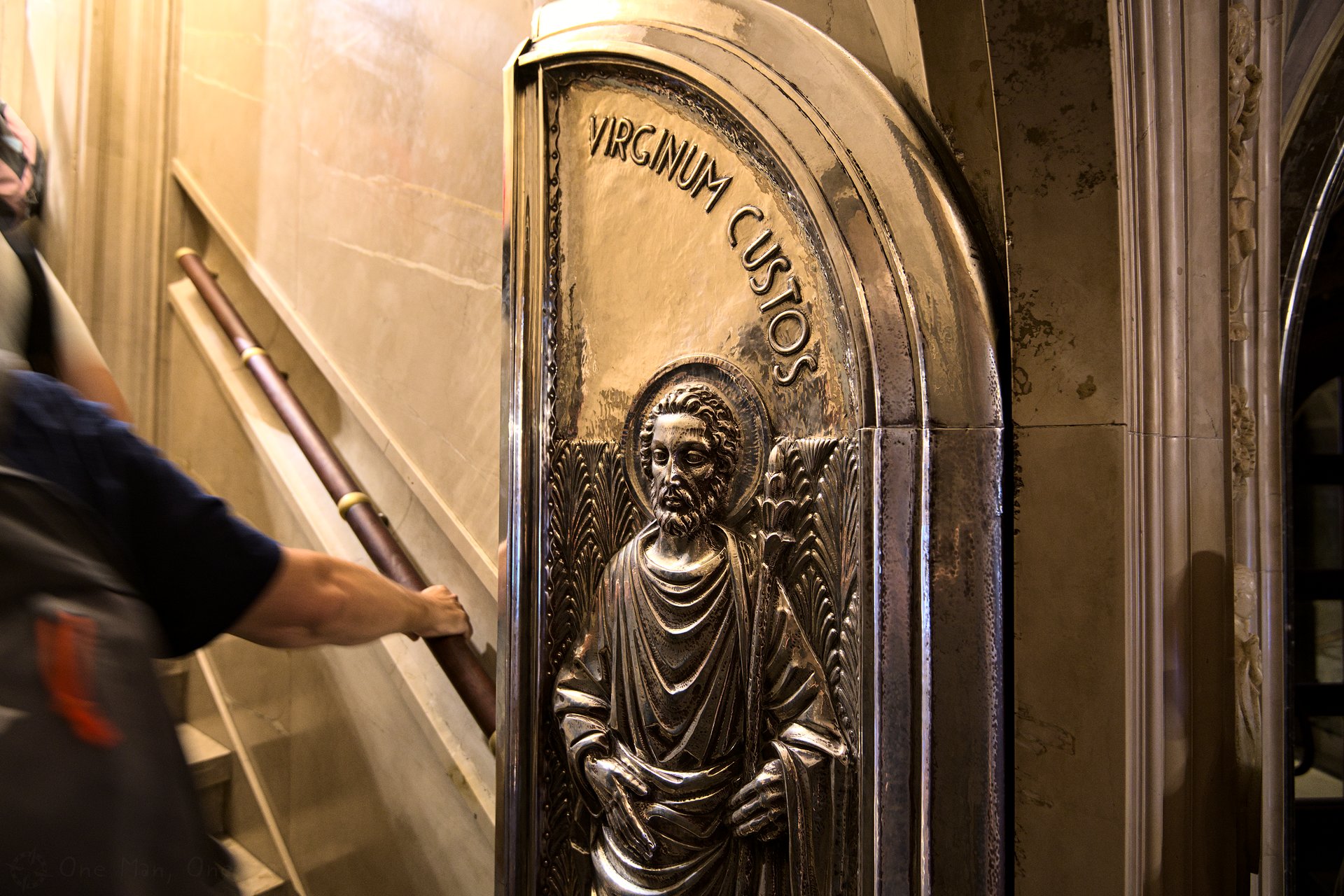
The actual statue of St. Mary appears tiny in comparison to the monastery and the huge Basilica. It is only 95 centimeters high, carved from poplar wood and set in gold. The sphere in its right hand symbolizes the universe, baby Jesus holds a pine cone as a symbol for resurrection and immortality. According to the tradition, one kisses or touches the hand of the Madonna while the other hand is stretched out towards Jesus. This happens thousands of times every day.
In 1493 Christopher Columbus named the Caribbean island of Montserrat (now part of the British Overseas Territories) after the Virgin of Montserrat.
We skipped the attached museum. The entrance fee is 7 Euro per person, but the fee is already included in some combination tickets with the rack railway or the other railways.
Hiking in Montserrat
Four hiking trails are marked in the mountains around the monastery:
- Path 1: Pla de les Taràntules (mountain station of the Sant Joan funicular) to the summit of Sant Jeroni
- Path 2: Summit Sant Jeroni to the monastery Santa Maria de Montserrat
- Way 3: Pla de les Taràntules to the monastery of Santa Maria de Montserrat
- Way 3a: Pla de les Taràntules to the Eremita de Santa Magdalena and back
You can combine all four hiking trails into a single round and complete it in a single day, including the visit to the monastery. This is not for the untrained hikers, though, since the whole round is about 14 kilometers long and has a total of 650 meters of vertical ascent.
A single trip with the Funicular de Sant Joan to Pla de les Taràntules costs 8.75 Euros, the return trip 13.50 Euros. A rather expensive affair. But if you walk down along paths number 2 or 3 you just need the single ticket for the trip up the mountain, and the funicular saves you an ascent of about 130 meters of elevation on foot.
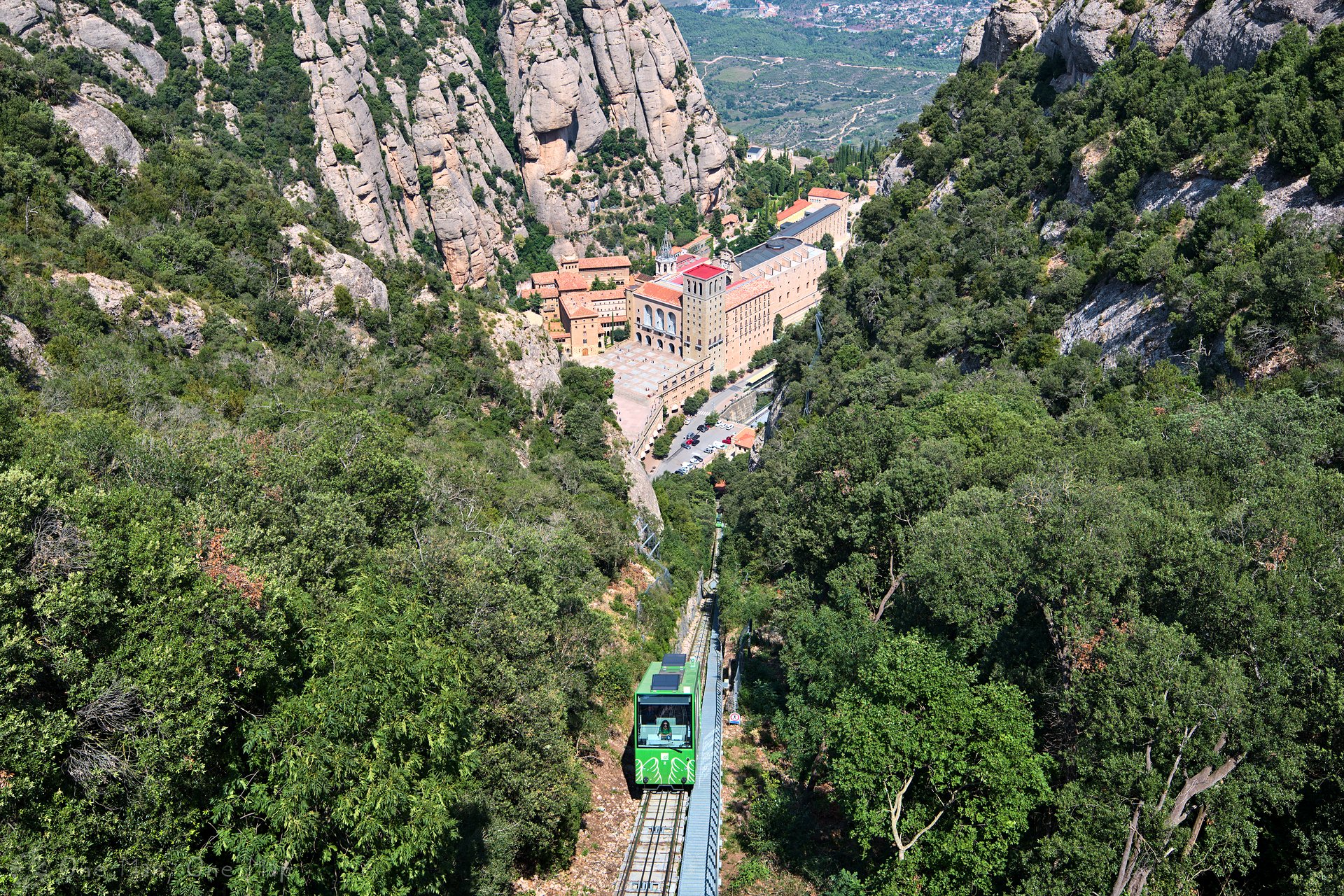
Which combination of hiking trails is the best one for you is hard to say. We skipped path number 2, took the Funicular de Sant Joan to Pla de les Taràntules, hiked to the summit of Sant Jeroni (path 1) and to the Eremita de Santa Magdalena (path 3a) and then took path number 3 back to the monastery. Path number 3 is probably not as beautiful as path number 2, but only from Creu de Sant Miquel you get a full frontal view of the monastery.
Path 1: To the summit of Saint Jeroni and back
| Distance | ~7 kilometers | Duration | 2,5 Stunden |
| Ascent | 386 Meter | Descent | 386 Meter |
| Easy Spring Summer Autumn | |||
The path from the funicular to the summit of Saint Jeroni branches off right at the mountain station. If you don’t pay attention here, take path 3a to the Eremita de Santa Magdalena.
Most of the trail runs unprotected along the rocks, only in a few places does it pass through the woods. During the warmer months one should therefore always bring enough water and sun protection.
Especially on the first one and a half kilometers one has a spectacular view of the jagged rock formations which give the Montserrat mountain range its name. The best view is from the Mirador de la Serra de les Paparres view point.
You will come across a small wooden bridge, where you turn right onto a paved path. At about three kilometers and 200 meters of altitude difference from the starting point you’ll then reach the small Ermita de Sant Jeroni chapel.
The last few meters are quite steep again, but the effort will be worth it later!
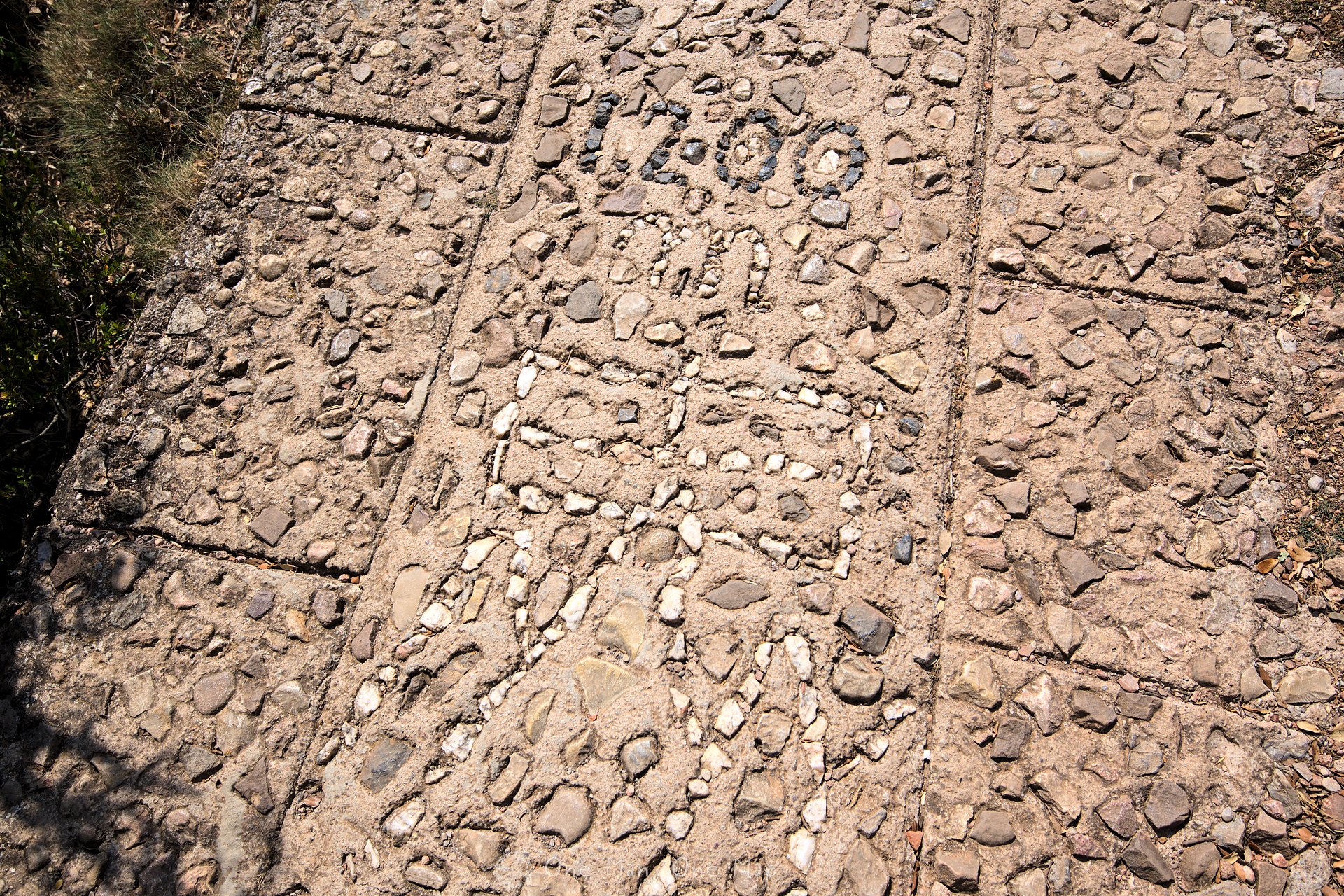
Hikers built stone pyramids along the path, as it is now common in many other places as well.
Shortly before the summit one already has a fantastic view of the surrounding area. We hadn’t come across such strange rock formations before 🙂
The last steps lie ahead of us, …
…and it’s done. We’ve reached the top of the 1236 meter high Sant Jeroni peak.
The effort really paid off. To the South one can see a good part of the Montserrat mountain range, including the telecommunications tower on the 1207 metre high Pico del Moro (left). The steepest cable car in all of Europe, the Aéreo de Sant Jeroni, ran to a restaurant on the top of Pico del Moro from 1929 to 1983. Nowadays the building only houses technical equipment for the antenna tower.
To the North the mountains drop of sharply to a depth of several hundred metres, so one can look down on to the valley. On the horizon one can even see the city of Manresa in a distance of about 20 kilometers.
The way back to the mountain station of the Funicular de Sant Joan is identical to the way to the summit.
Path 2: From the summit of Saint Jeroni to the monastery
| Distance | 3,5 kilometers | Duration | 1 hour |
| Ascent | – | Descent | 470 Meters |
| Easy Spring Summer Fall | |||
Of course you can also hike this path in the opposite direction. But then you have to climb the most unpleasant part – the many stairs close to the monastery – right at the beginning, and after that you have to climb even more.
Therefore, my recommendation is the combination with path number 1: Take the Funicular to Pla de les Taràntules, hike to the summit of Saint Jeroni and then back to the monastery. The turnoff to path number 2 is located approximately one kilometer or 25 minutes before the summit and is well marked. It takes about an hour from the signpost down to the monastery.
On the way you can make a detour to the small church Ermita de Sant Benet, which towers on a rock high above the monastery.
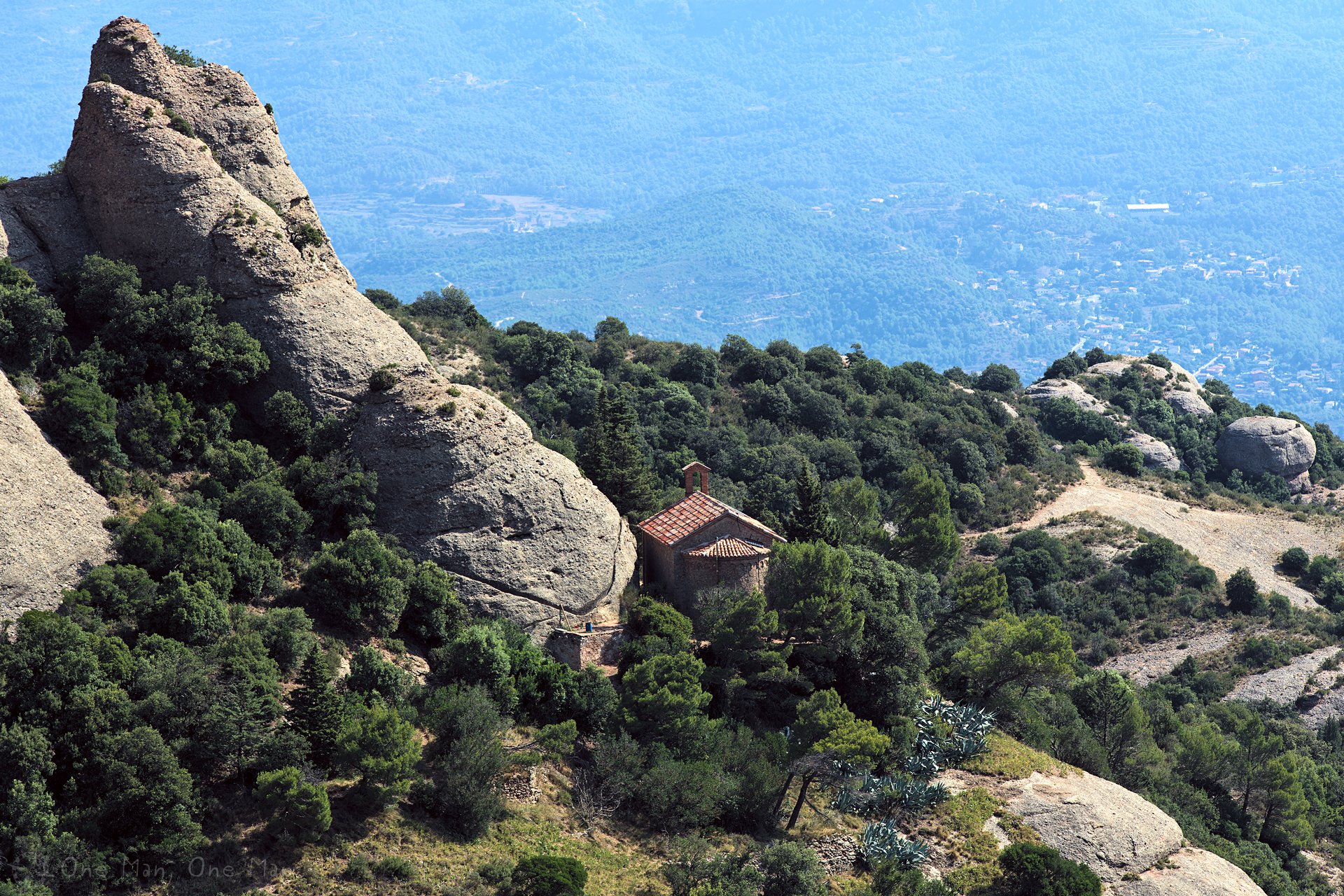
Path 3a: To the Santa Magdalena summit and back
| Distance | ca. 1,5 kilometers | Duration | 40 minutes |
| Ascent | 123 meters | Descent | 123 meters |
| Easy Spring Summer Fall | |||
This path starts at the mountain station of the Funicular de Sant Joan and is – due to its shortness – much more popular than the path towards Sant Jeroni. You can easily tell by the sheer width and quality of the path’s surface.
On the way to the top you pass several other sanctuaries, like the Ermita de Sant Joan Baptista, and have a beautiful view on the valleys.
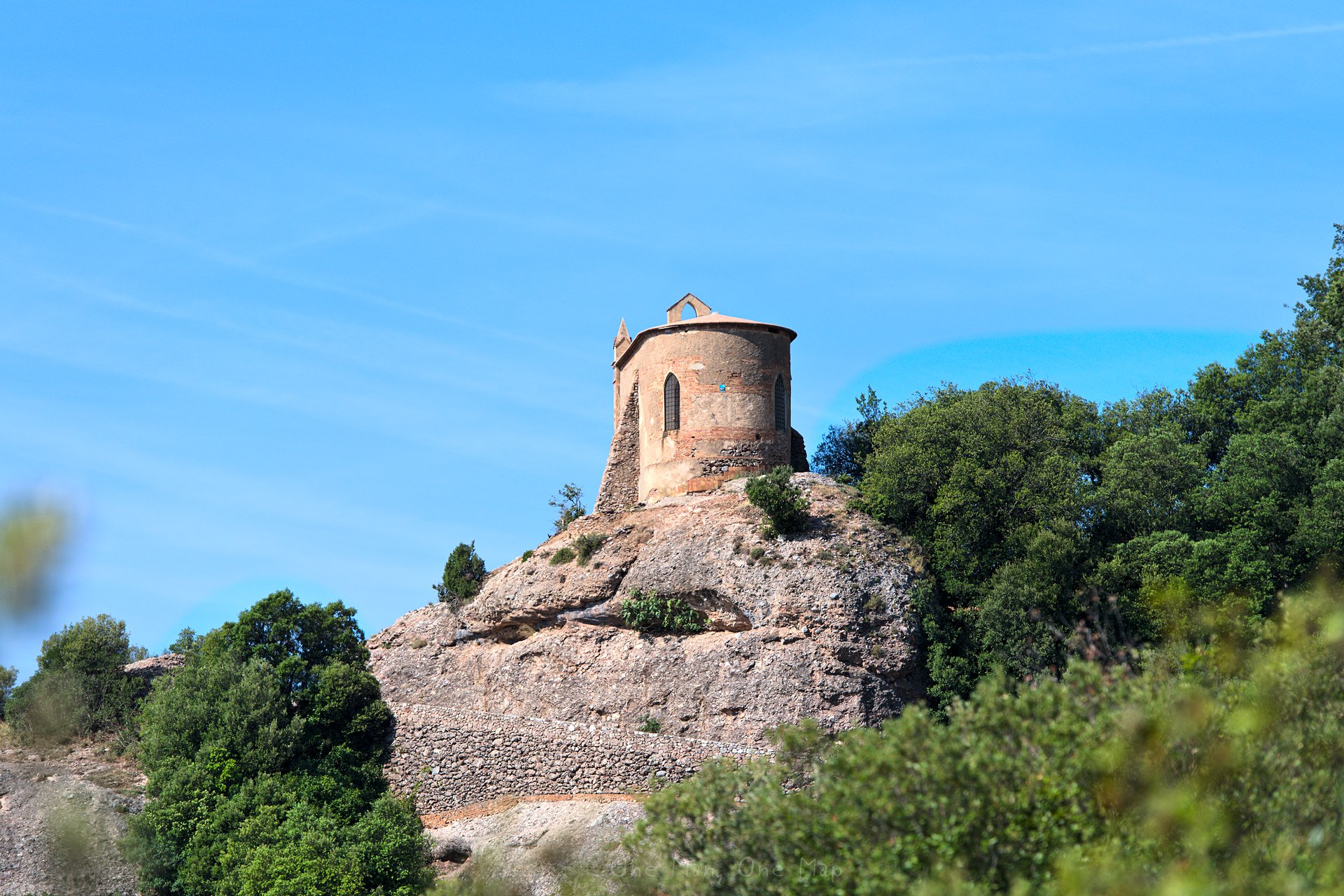
Way 3: Pla de les Taràntules to the monastery of Santa Maria de Montserrat
| Distance | 1,5 kilometers | Duration | 40 minutes |
| Ascent | 126 meters | Descent | 126 meters |
| Easy Spring Summer Fall | |||
Path number 3 simply leads back to the monastery along the supply road for the mountain station of the funicular. It is therefore not as beautiful and varied as the other paths.
But those who invest the almost 40 minutes for the descent will not just save on the return ticket for the funicular. Path number 3 offers two perspectives which cannot be seen on all other paths. The first one is the view on the valley next to the monastery. The second one is a frontal view on the monastery from the Creu de Sant Miquel, the Cross of Saint Michael. The header picture for this post was taken at Creu de Sant Miquel.
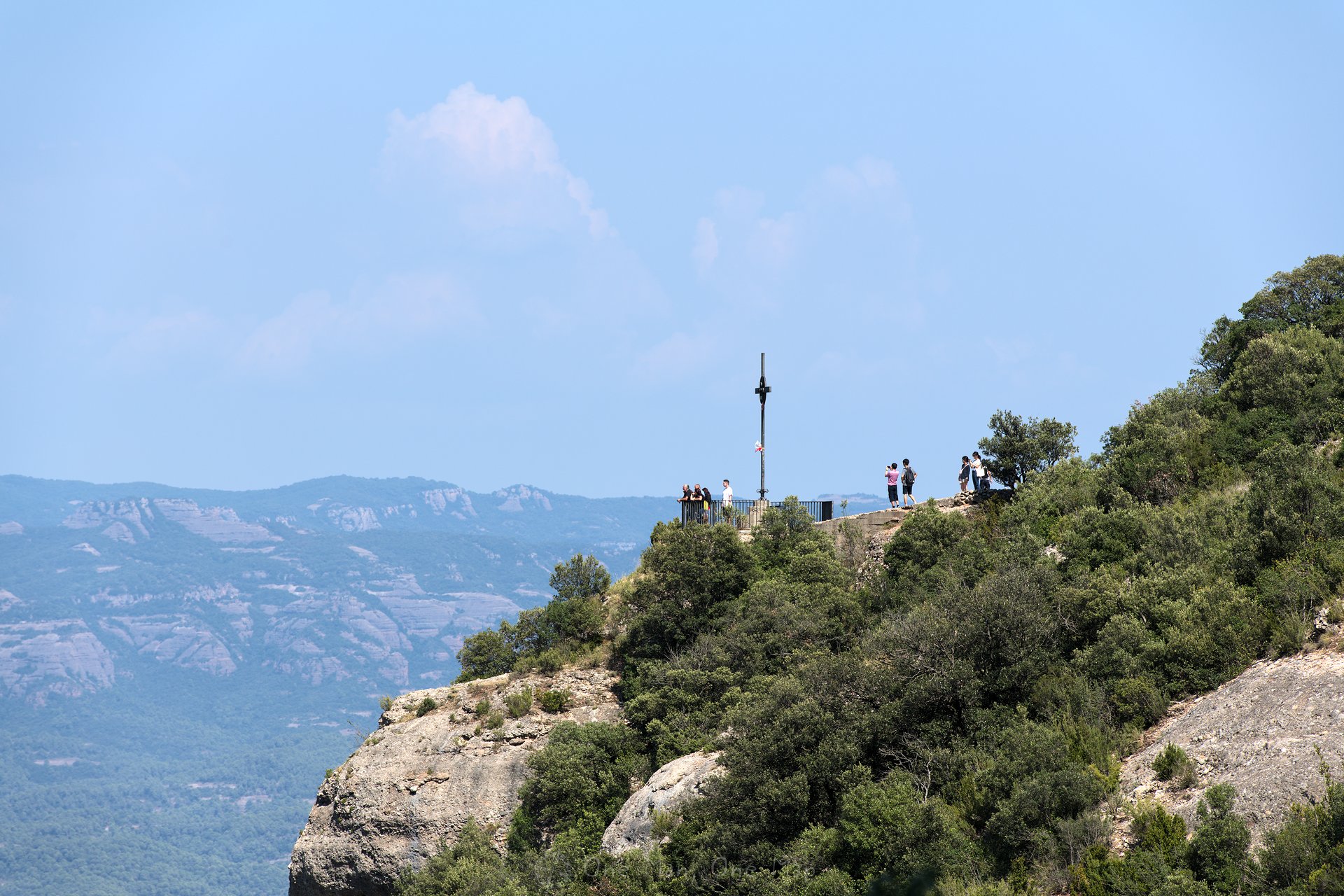
Conclusion: Whether you are interested in the monastery or not , the Montserrat mountain range has a lot to offer for pilgrims and hikers alike 🙂 Due to its good connections to the regional railway network it makes a very good day trip for travellers without a rental car.
This post was written by Simon for One Man, One Map. The original can be found here. All rights reserved.

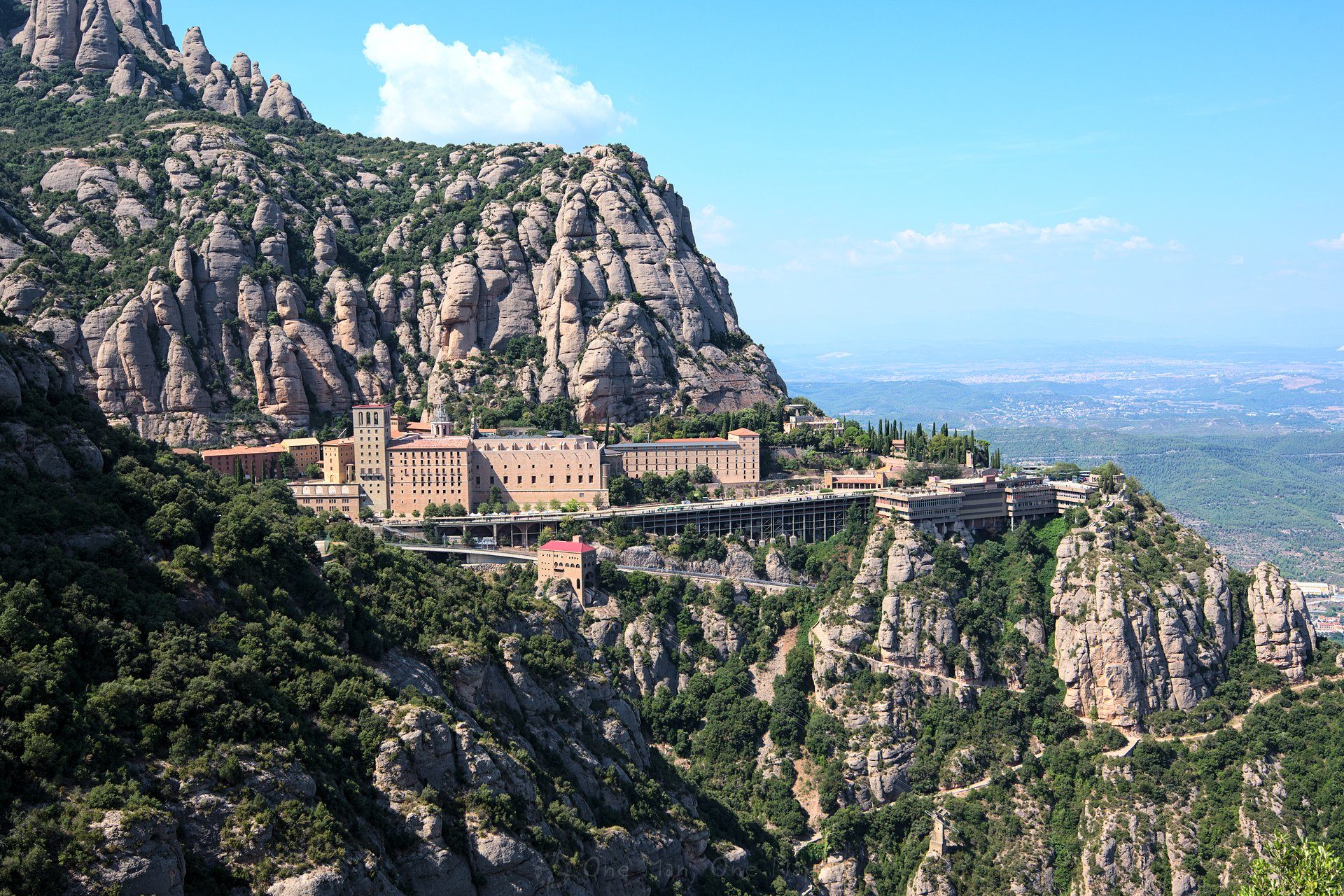
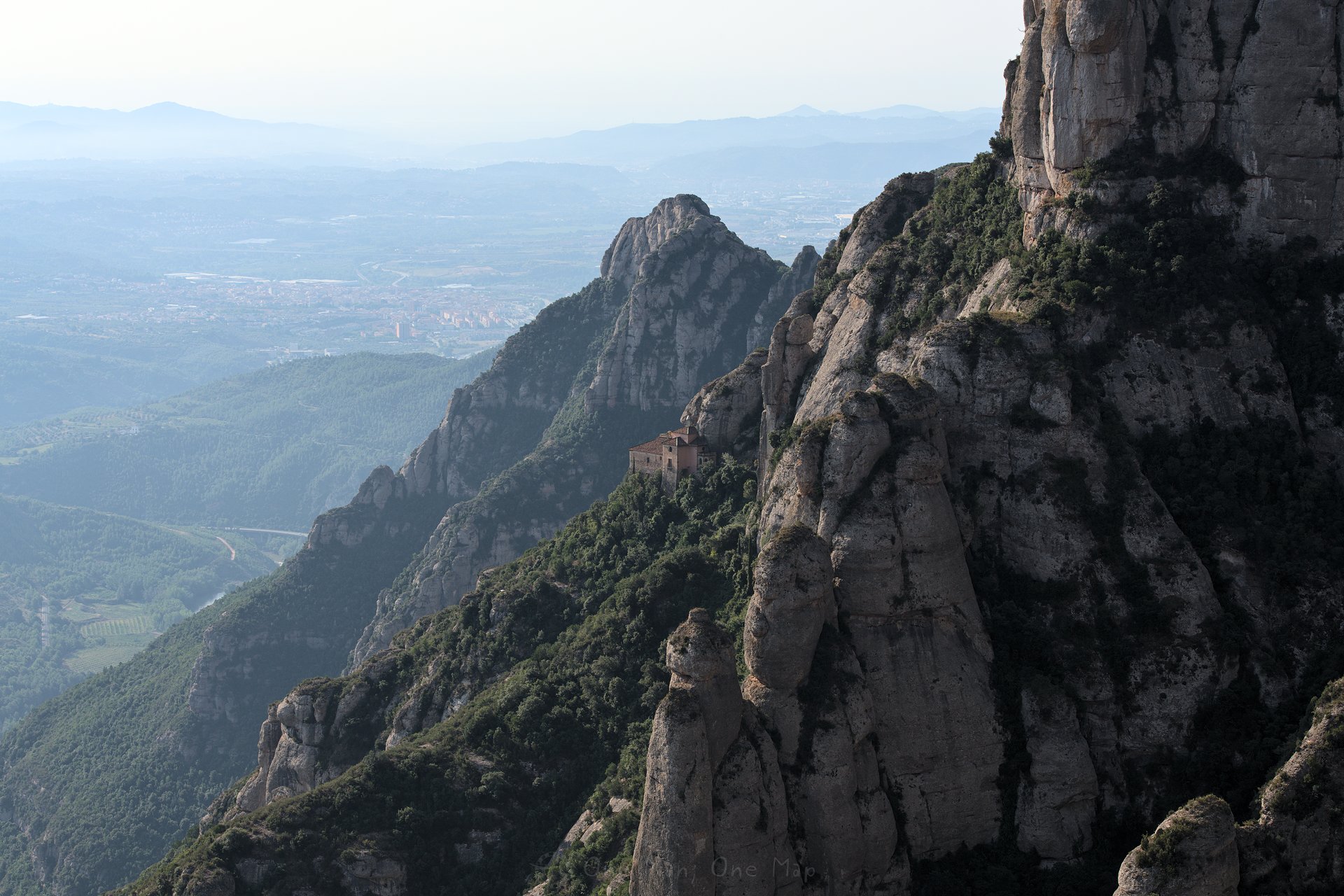
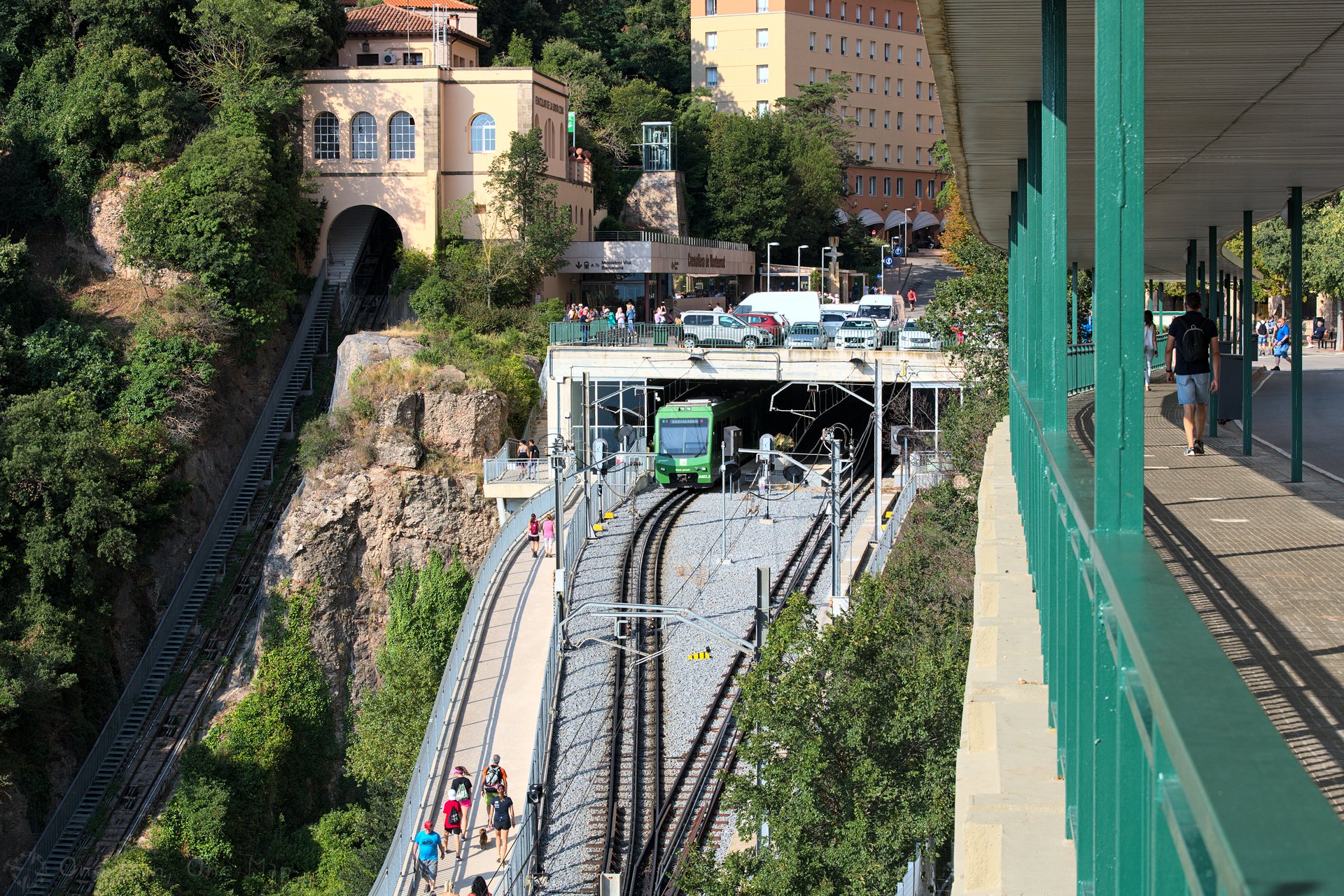
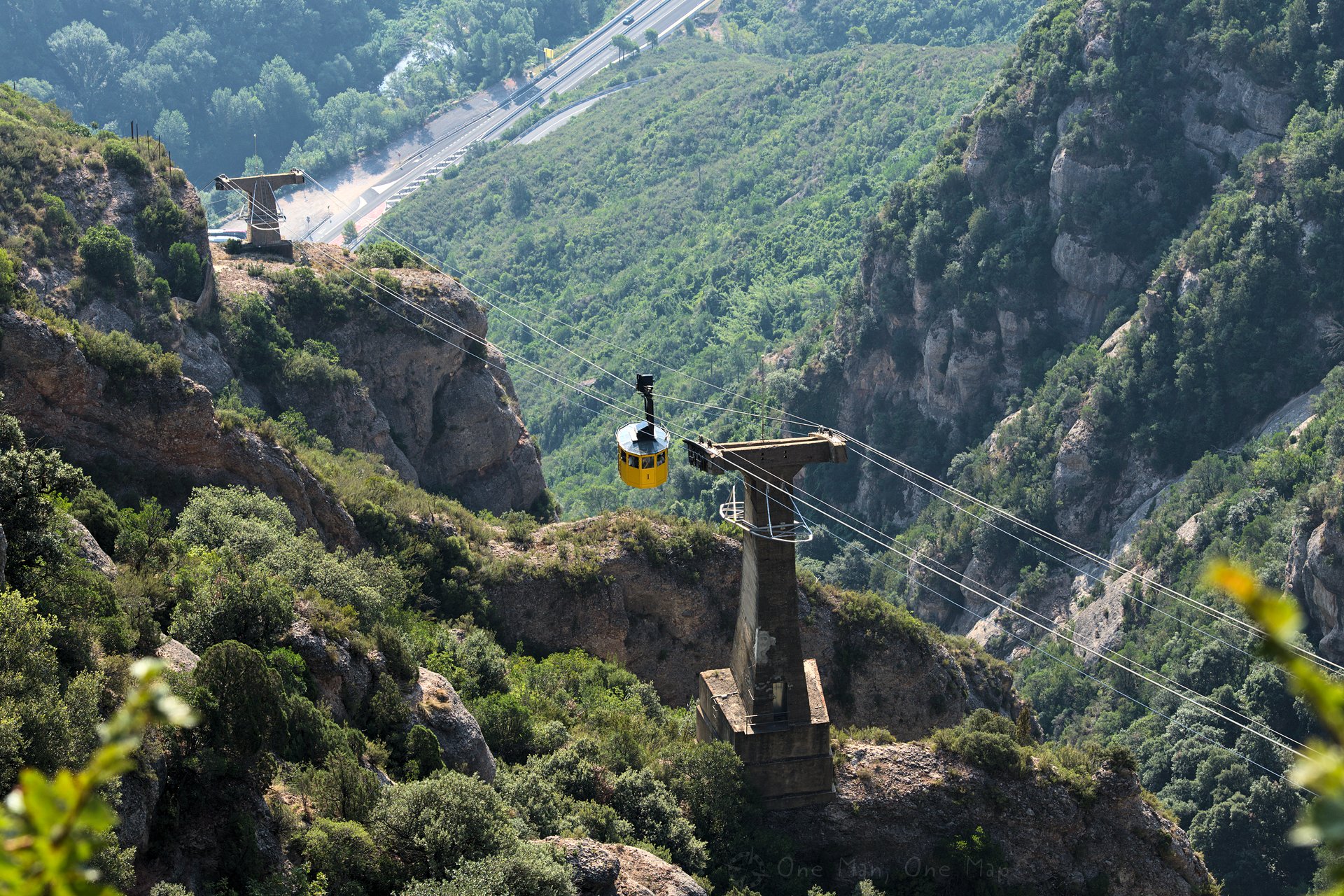
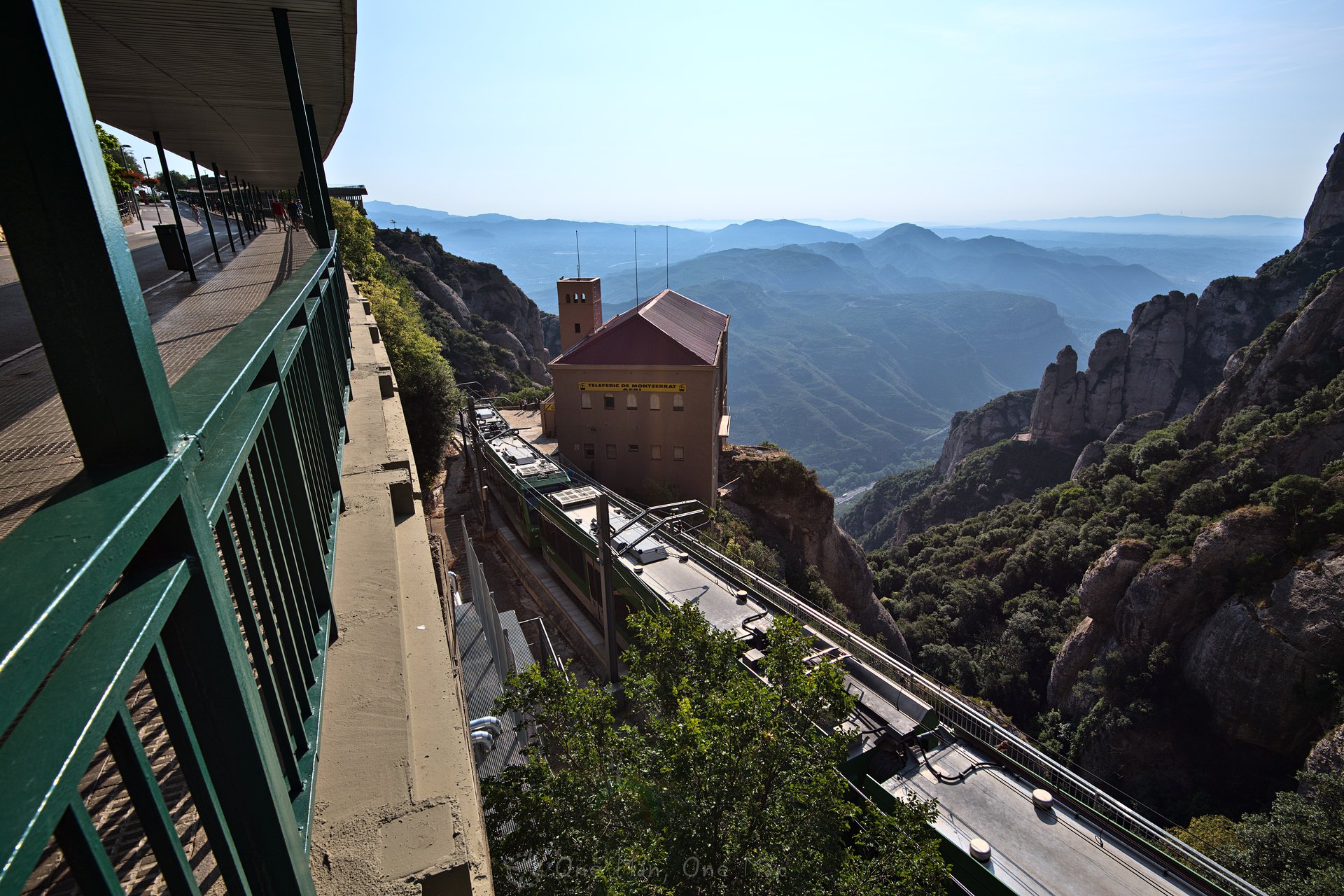
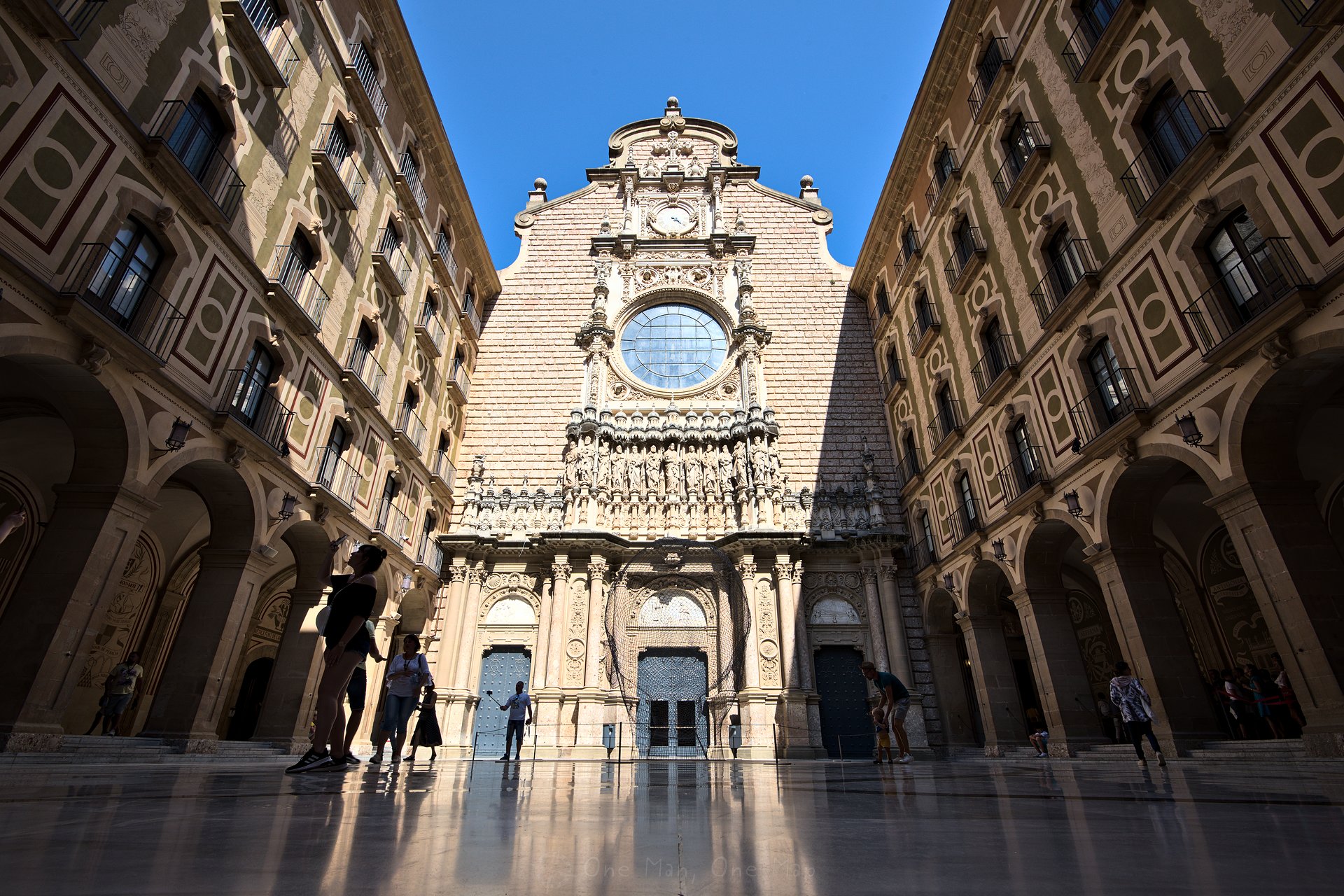
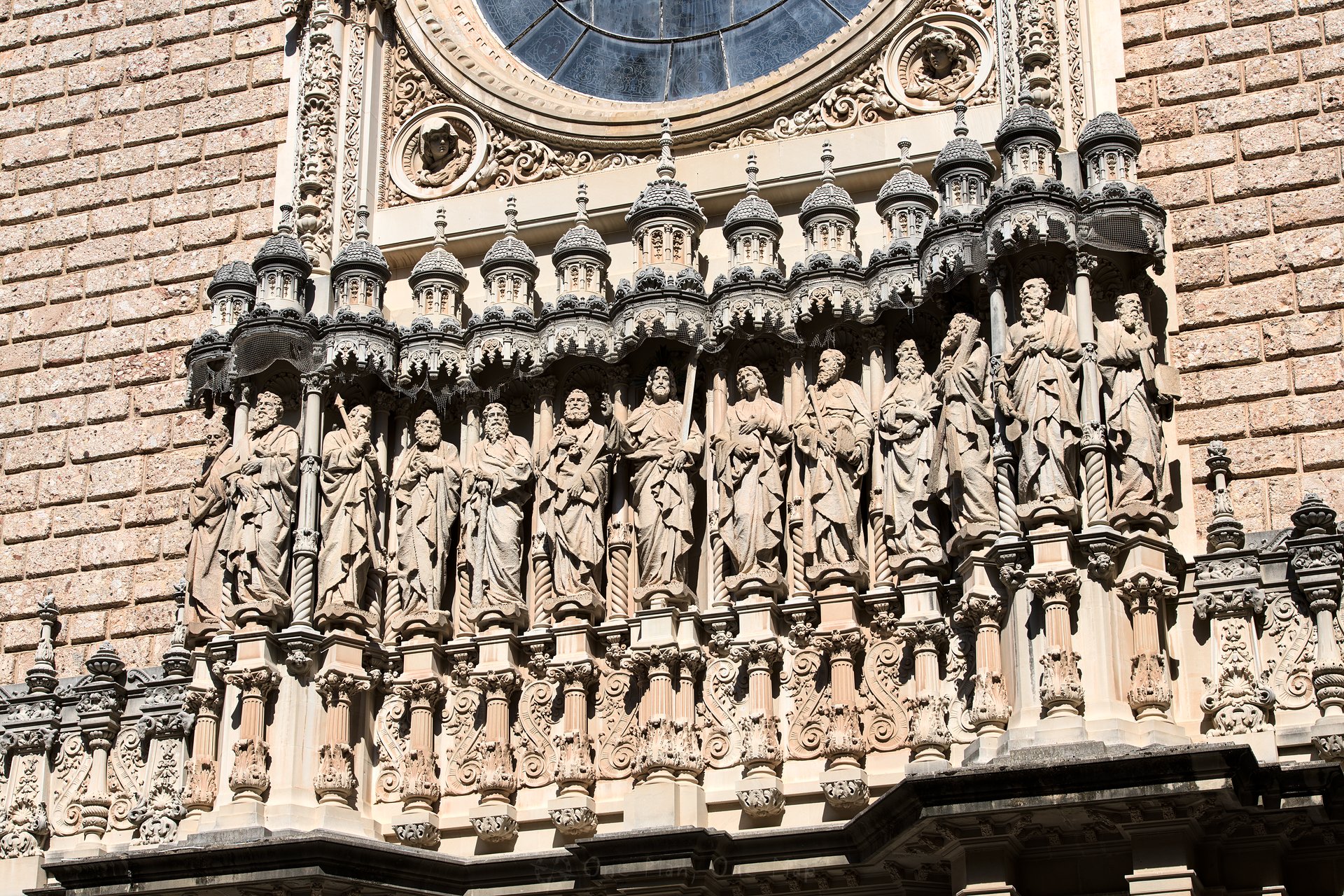
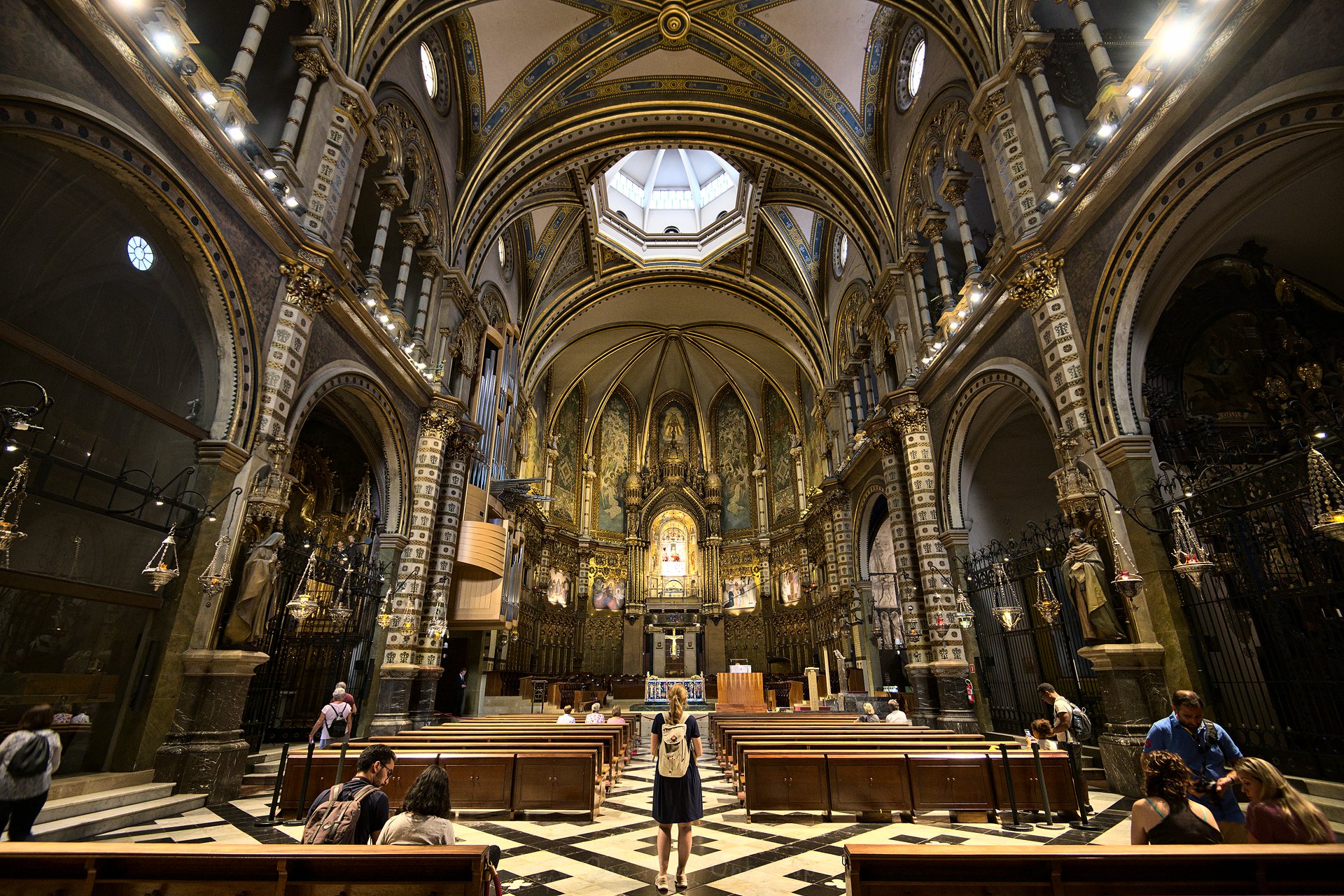
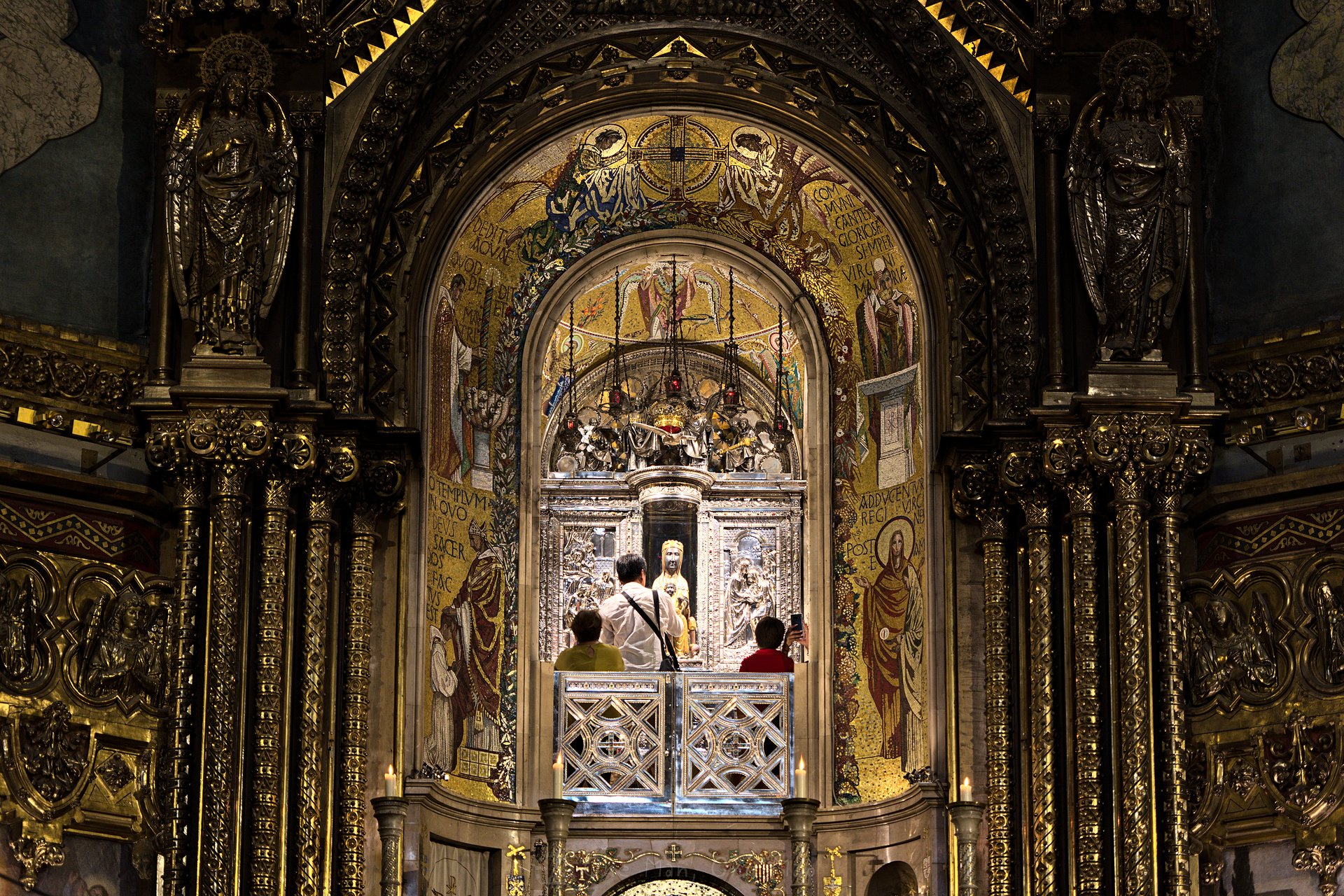
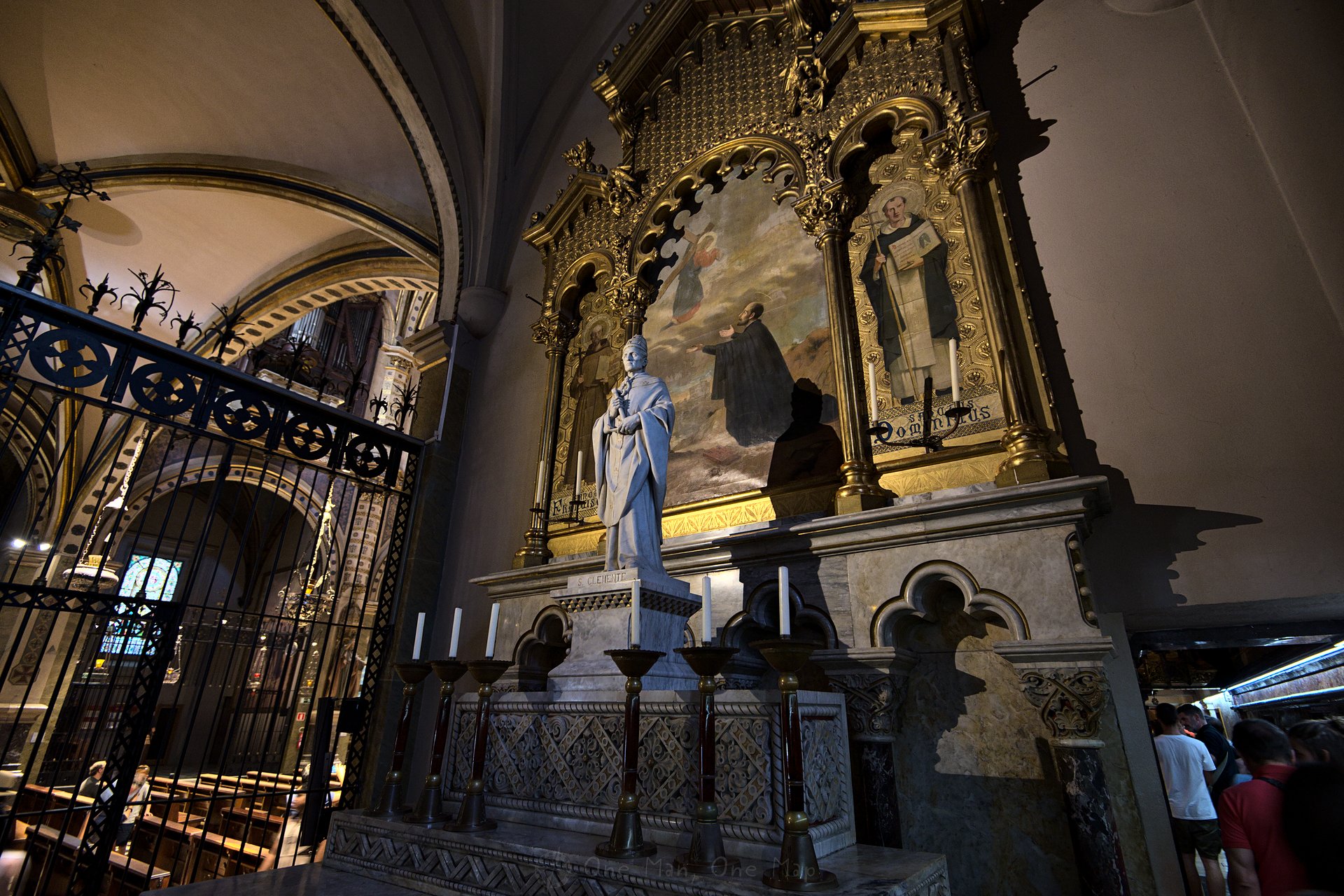
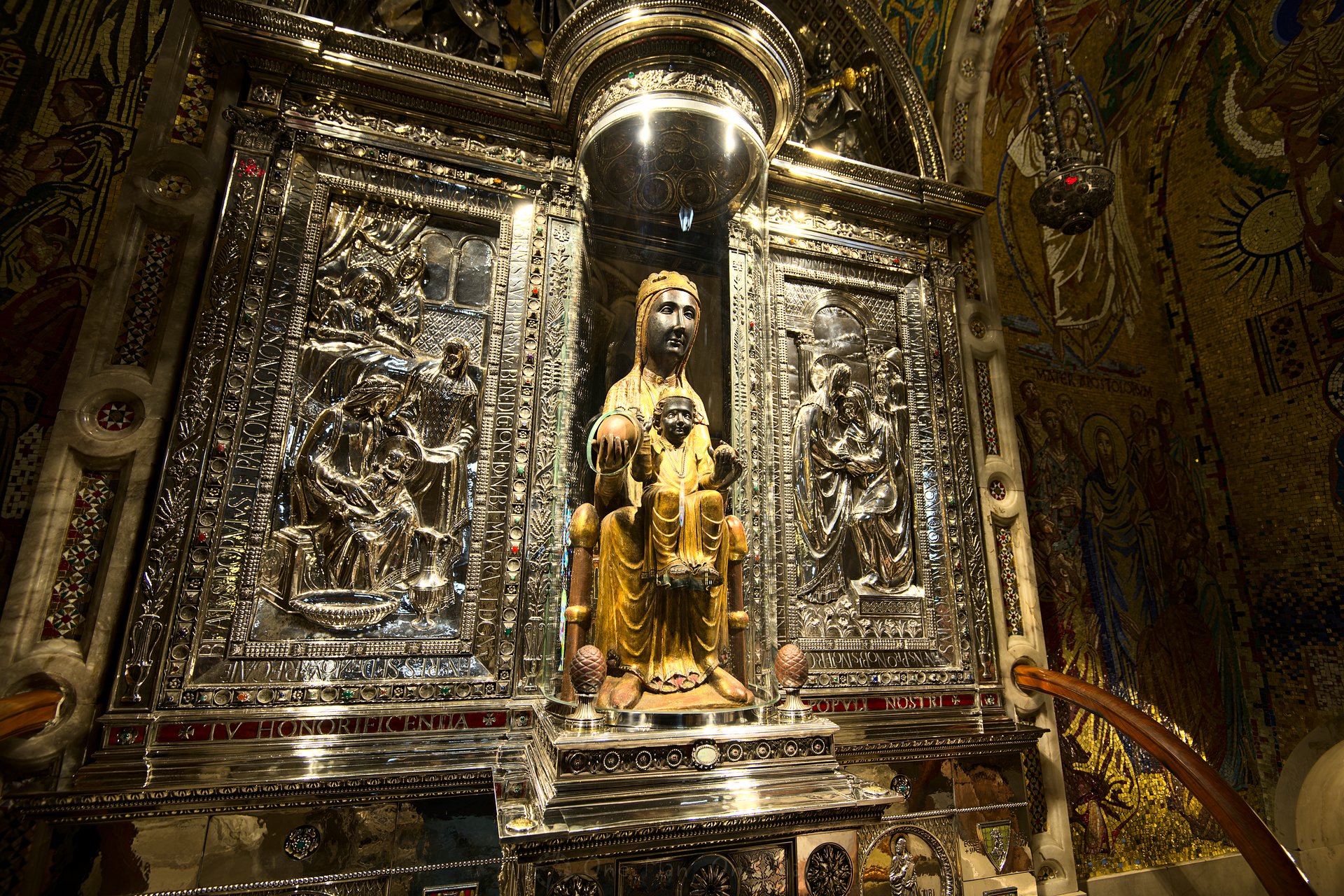
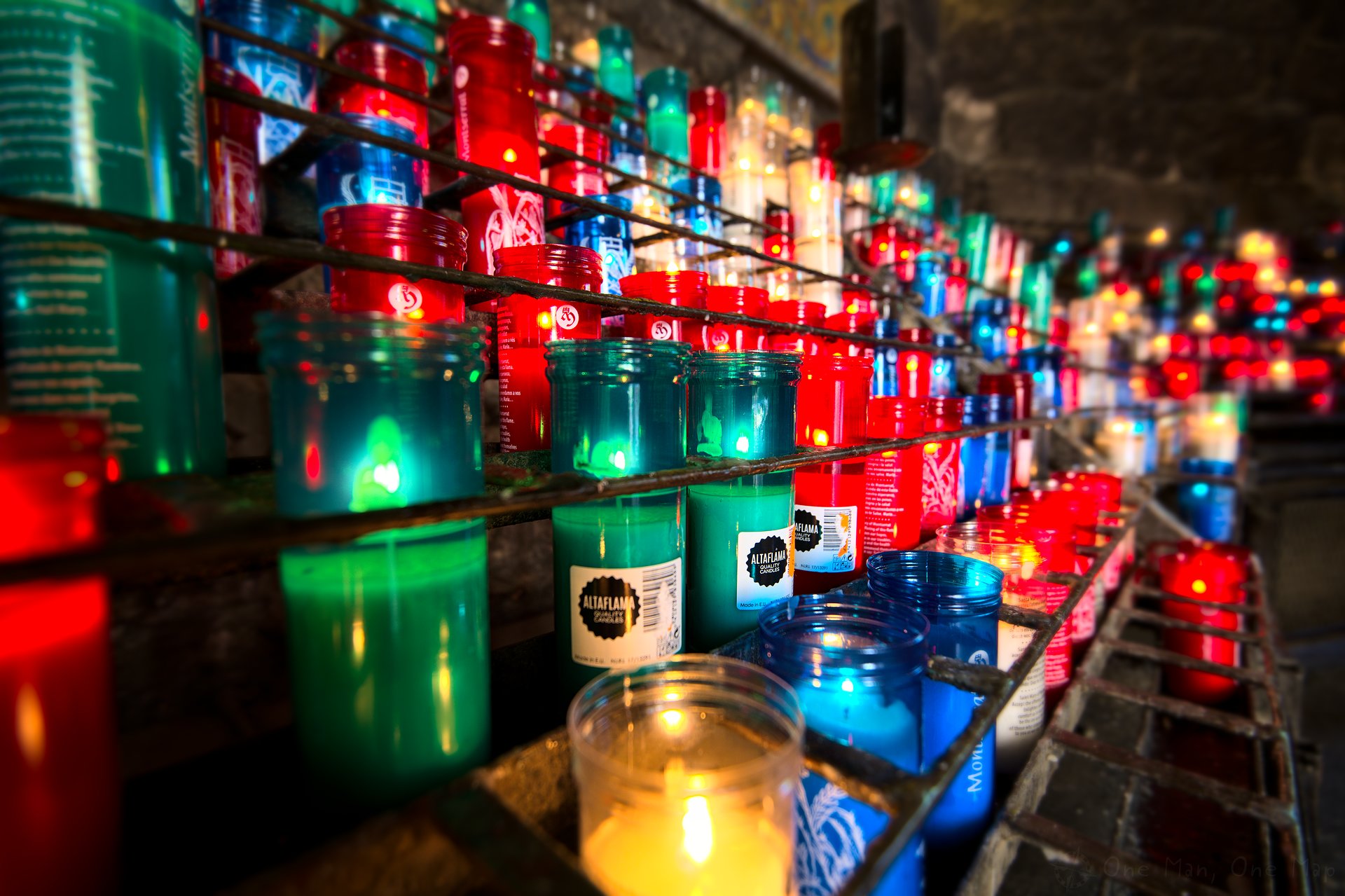
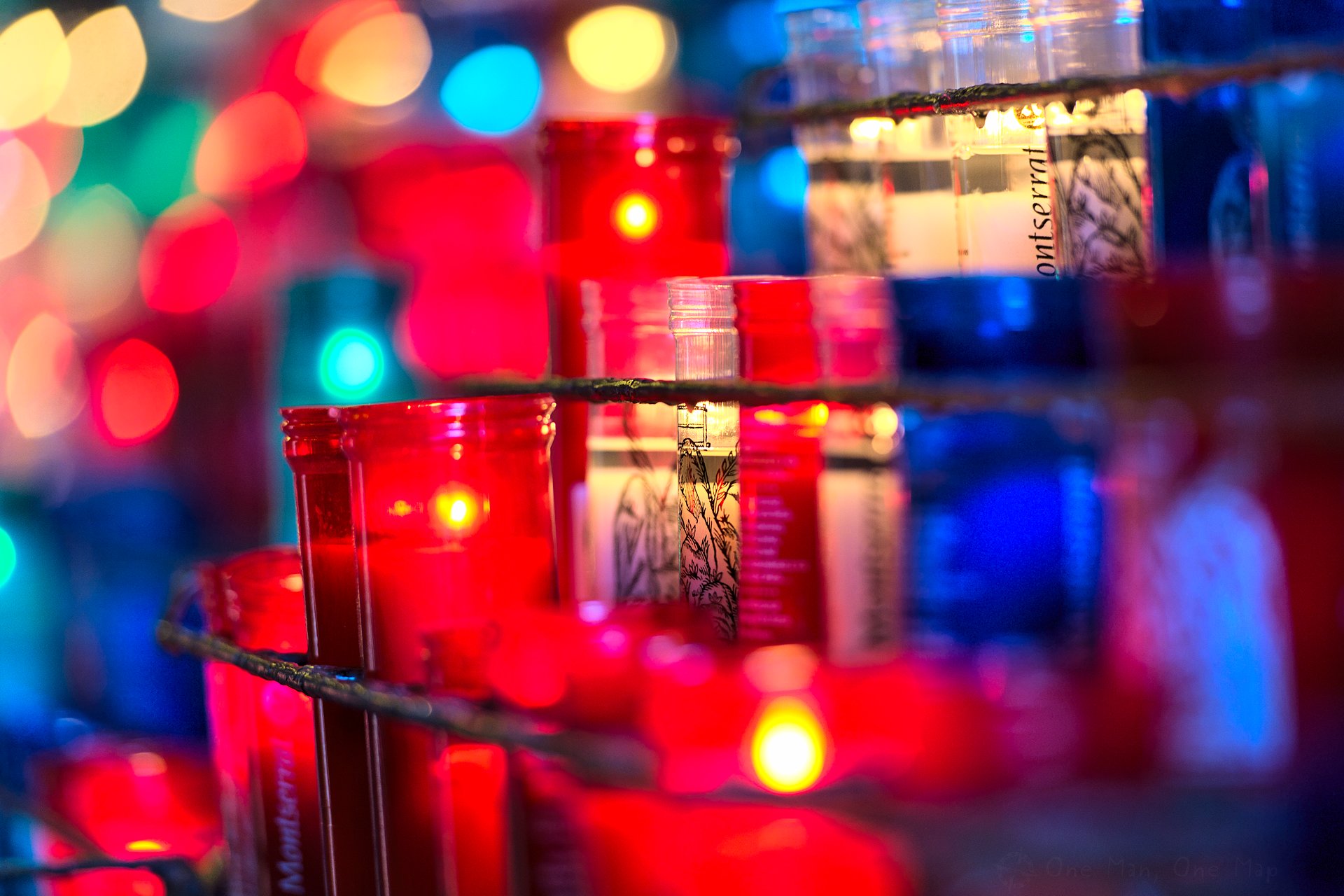
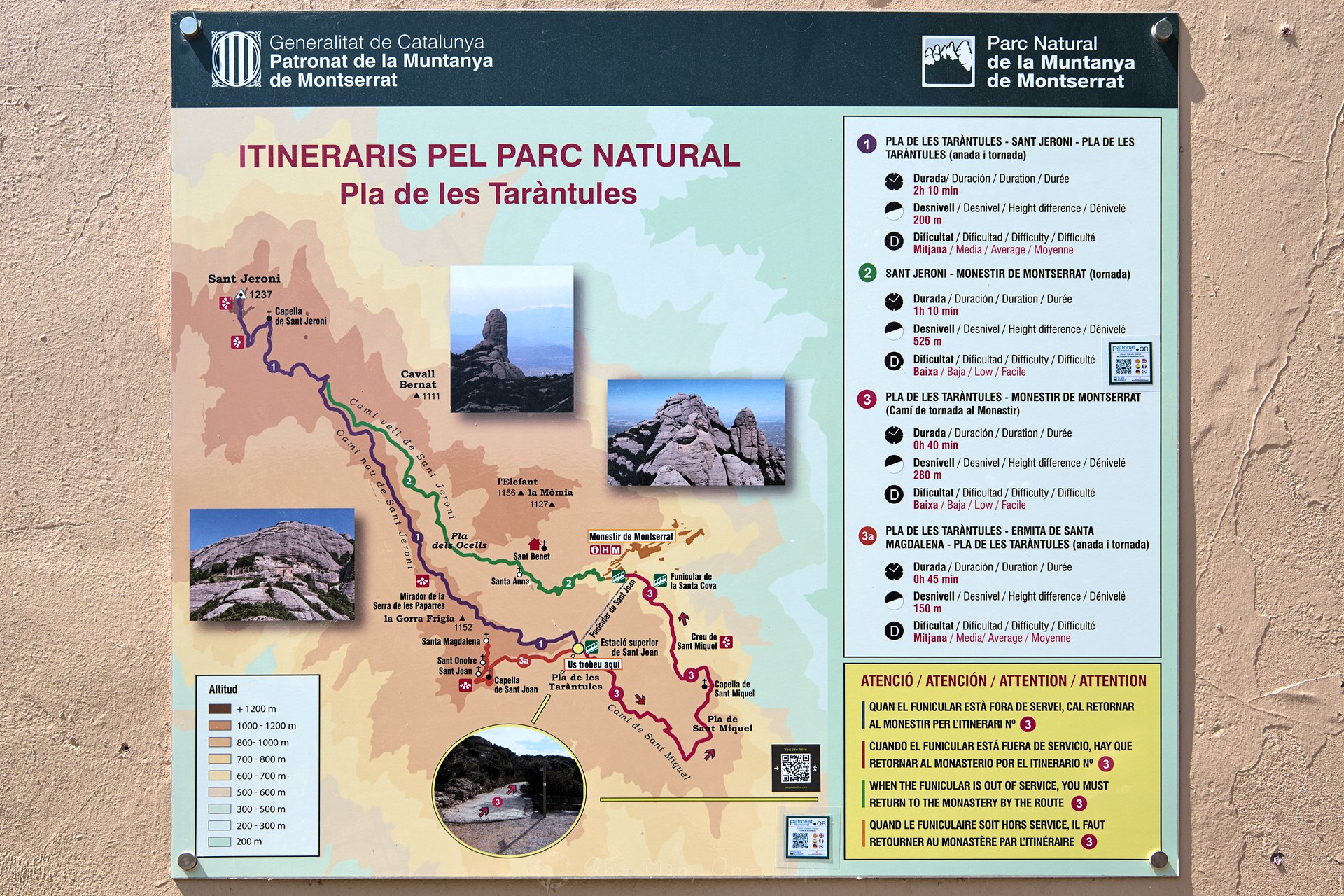
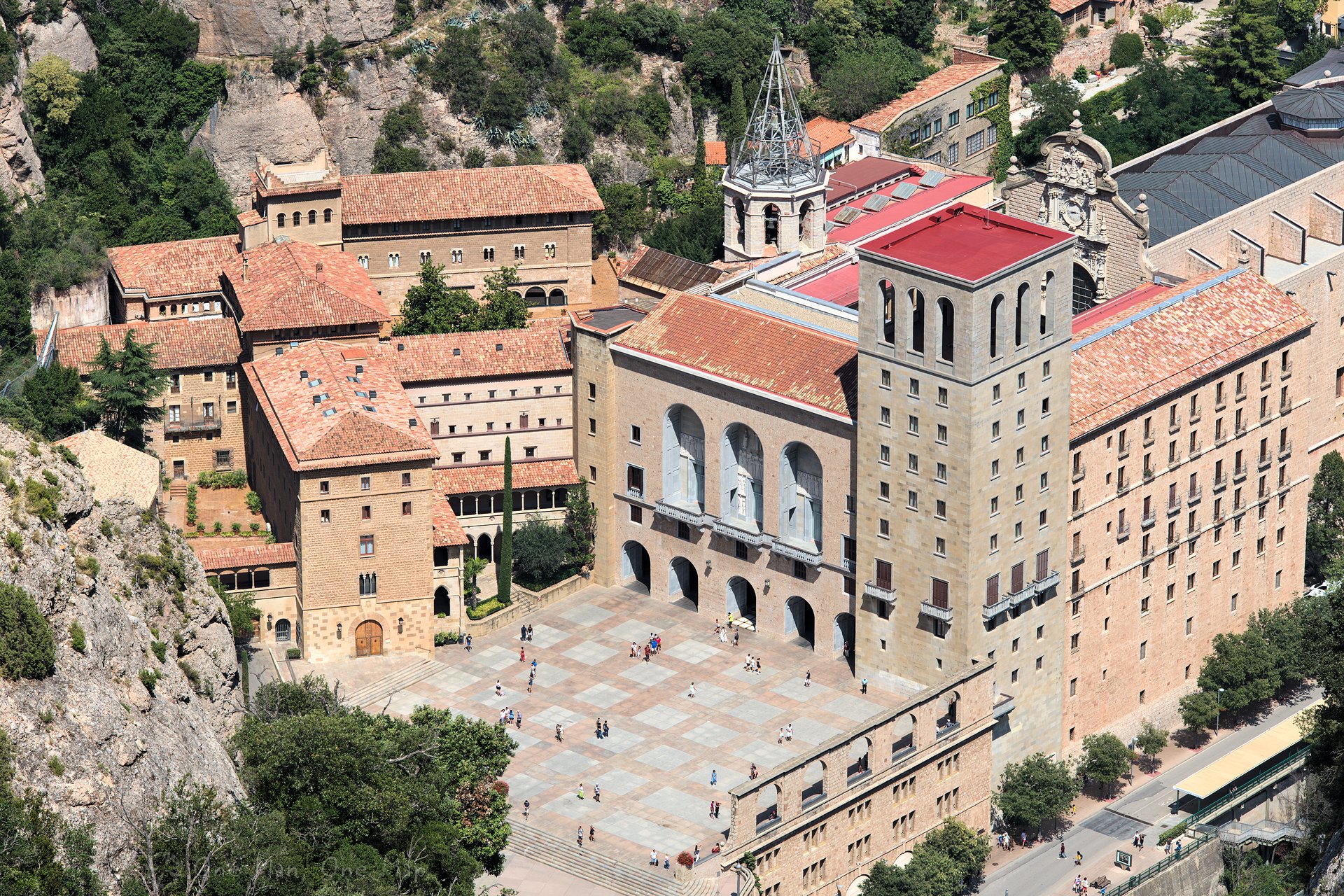
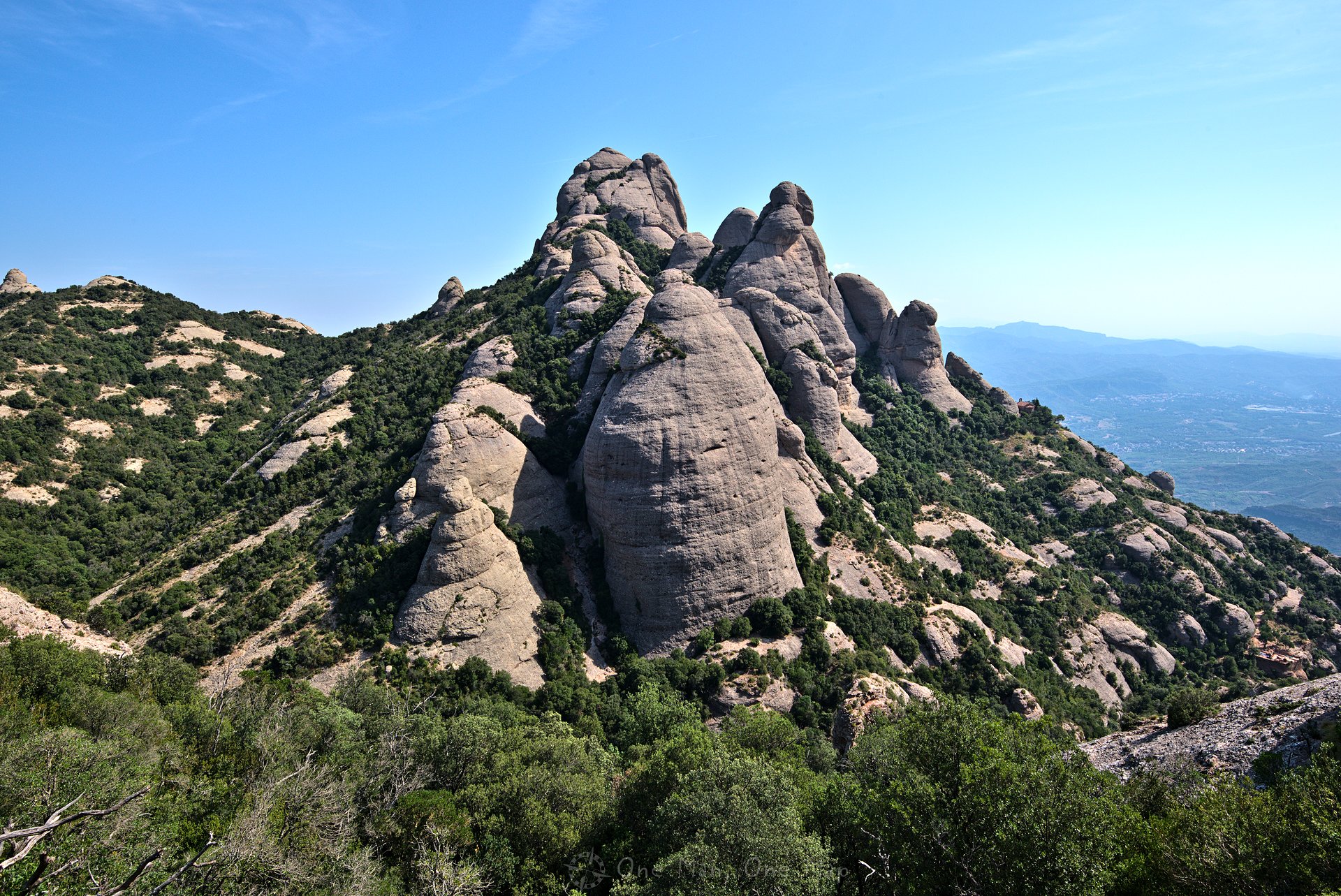
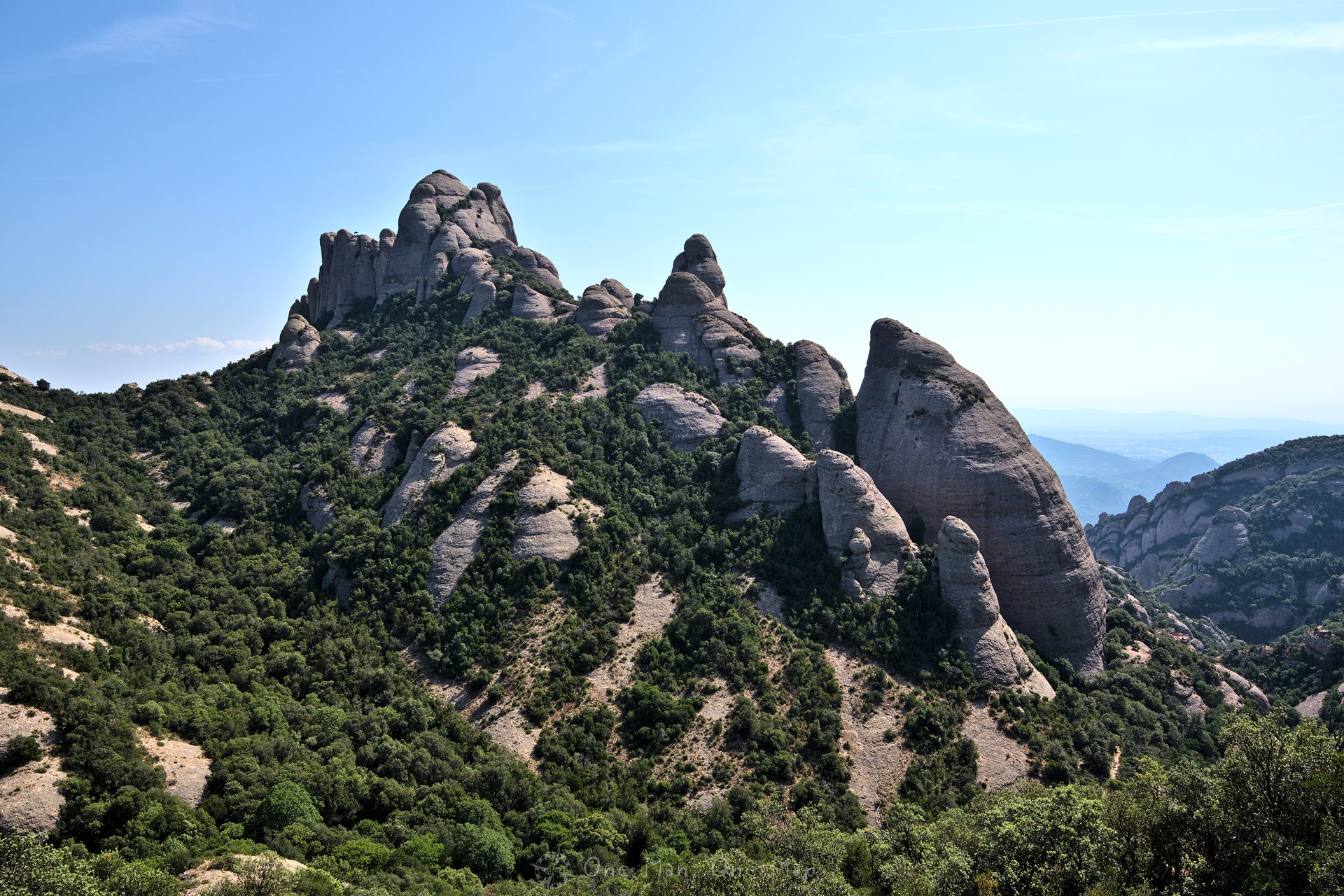
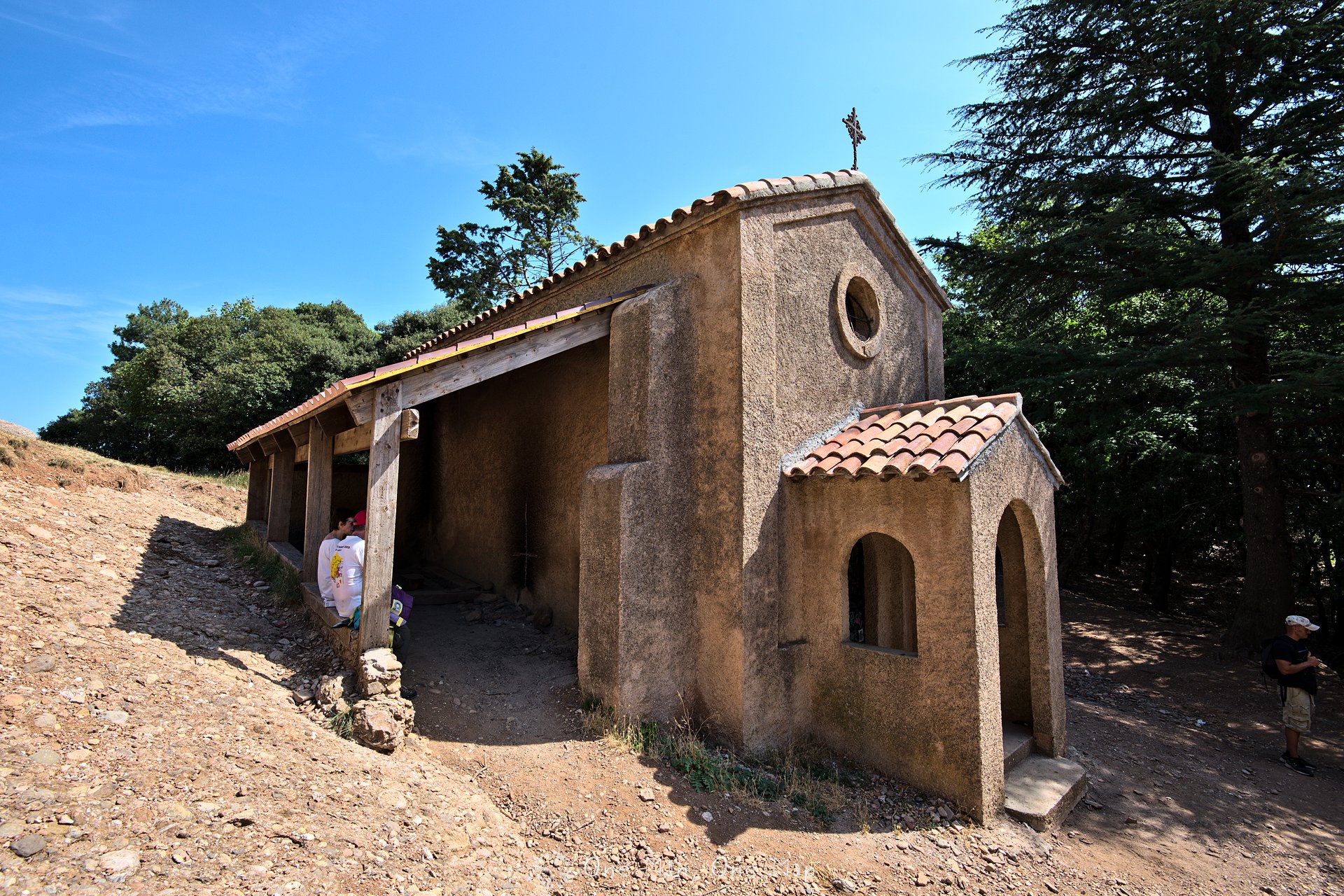

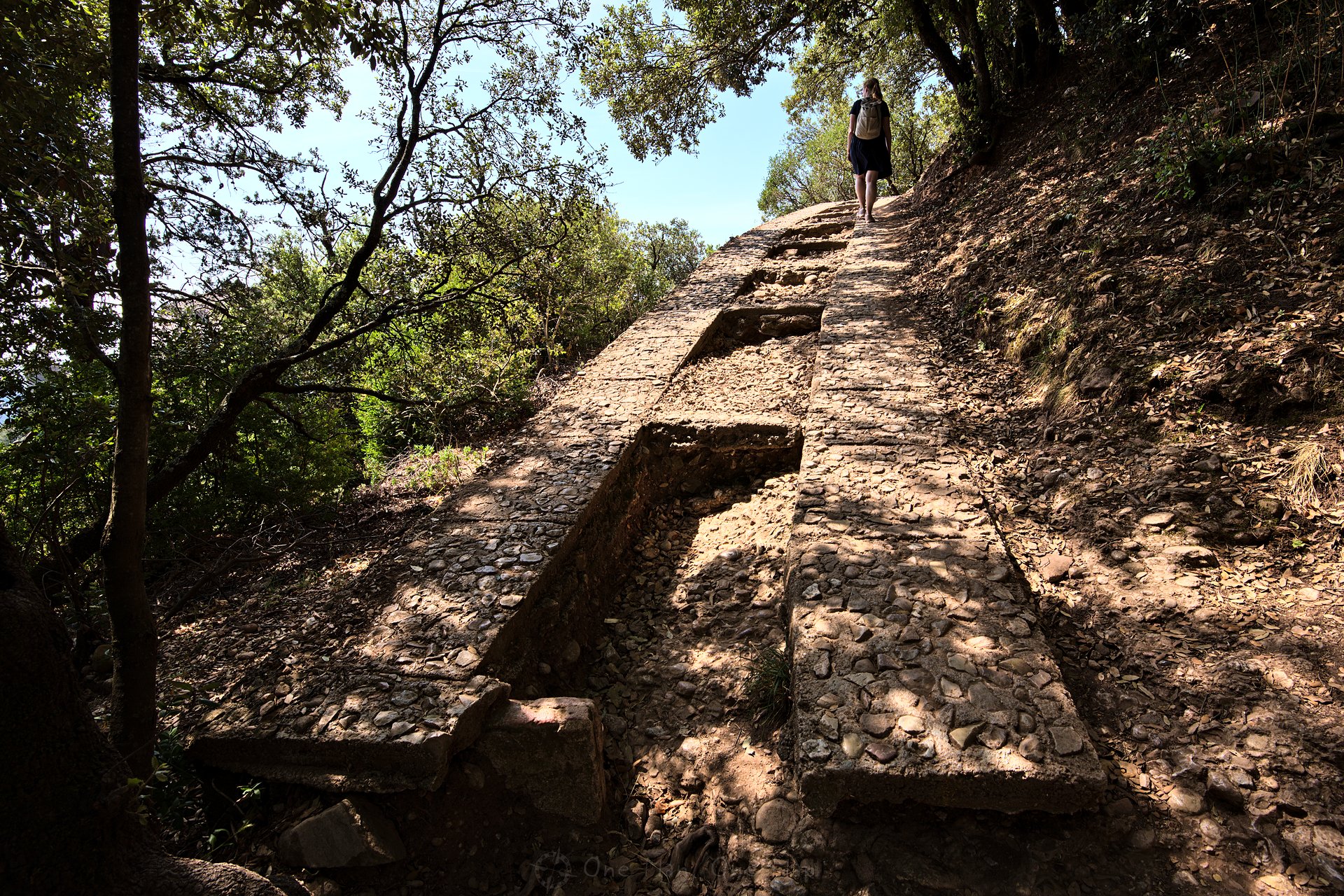
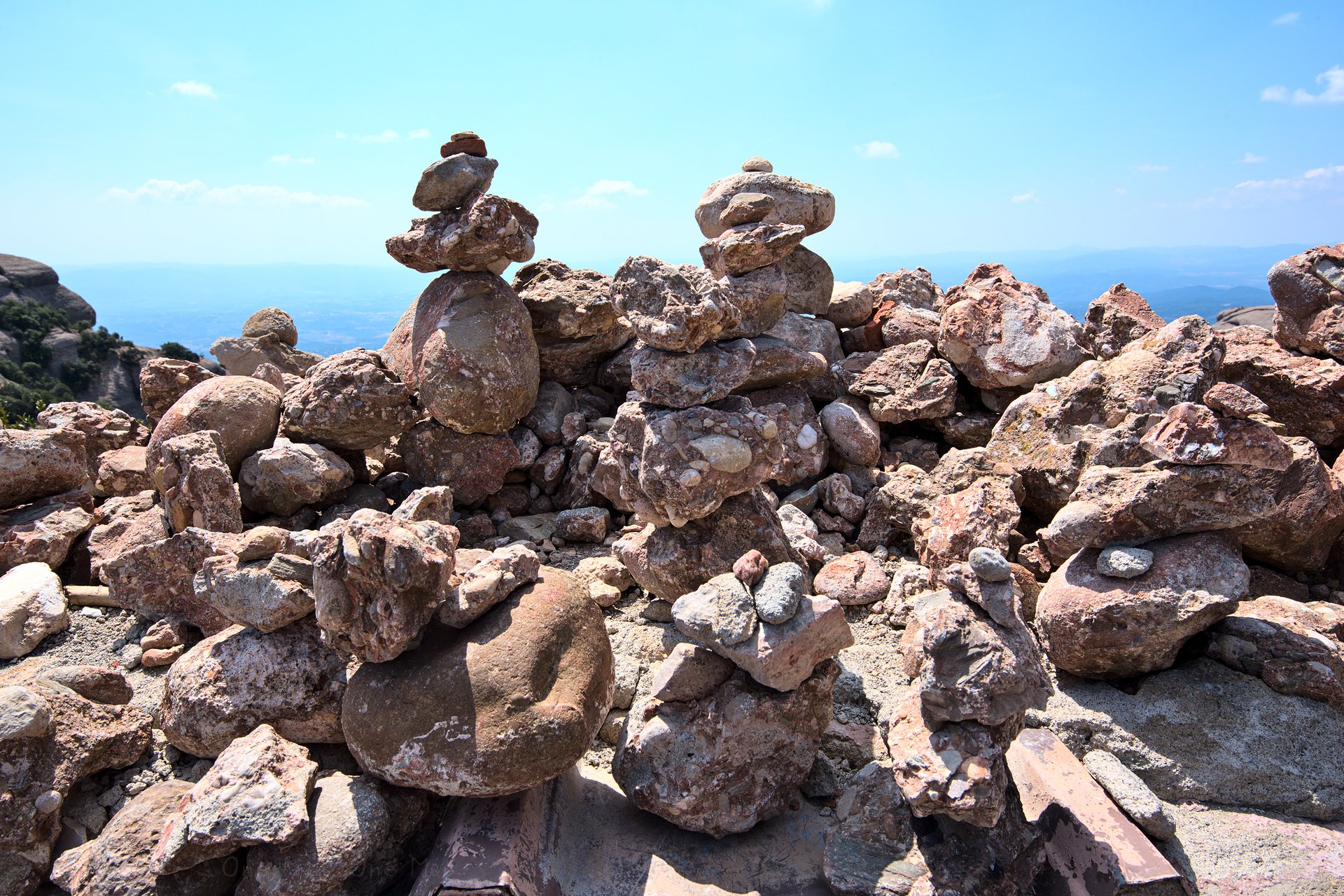
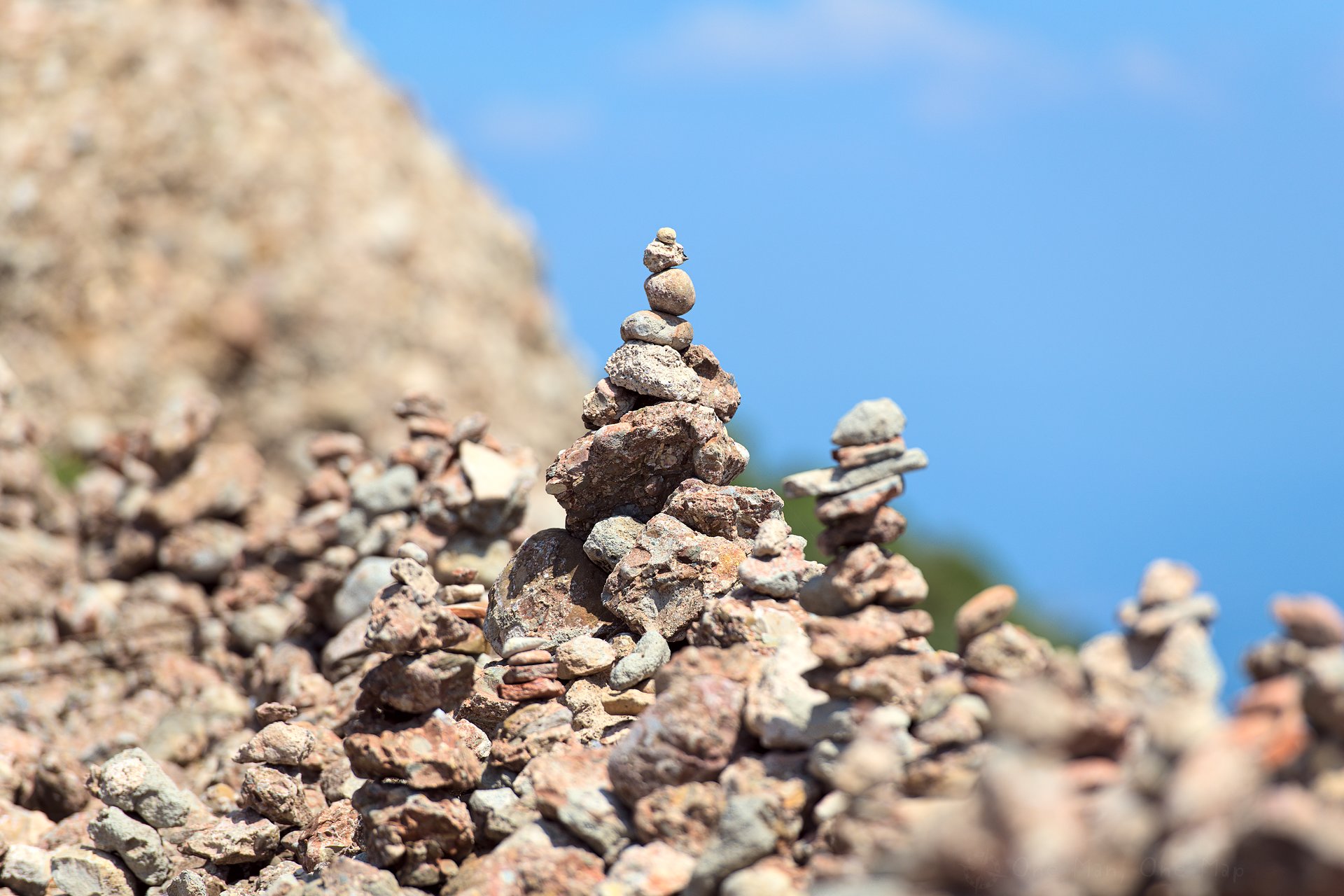
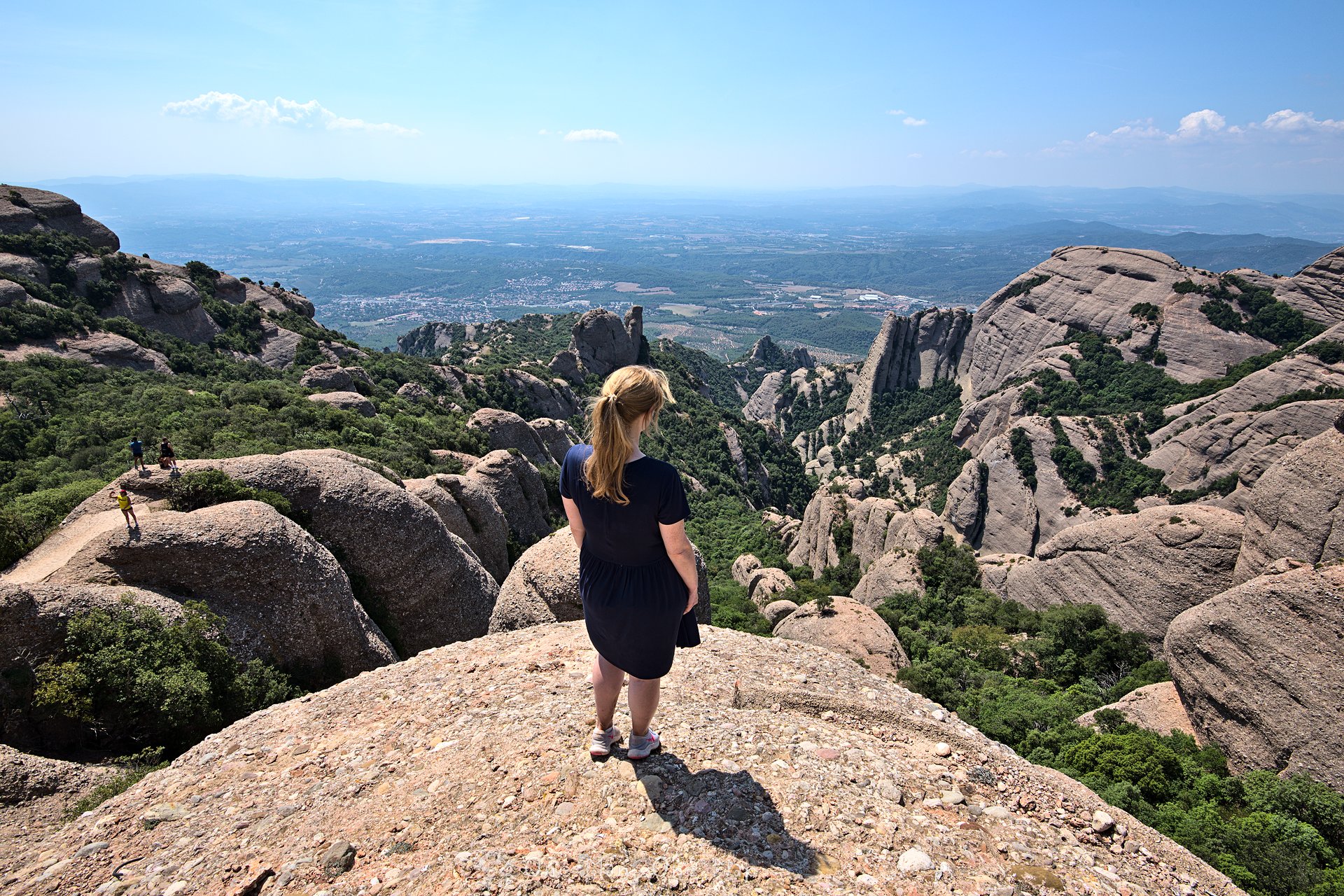
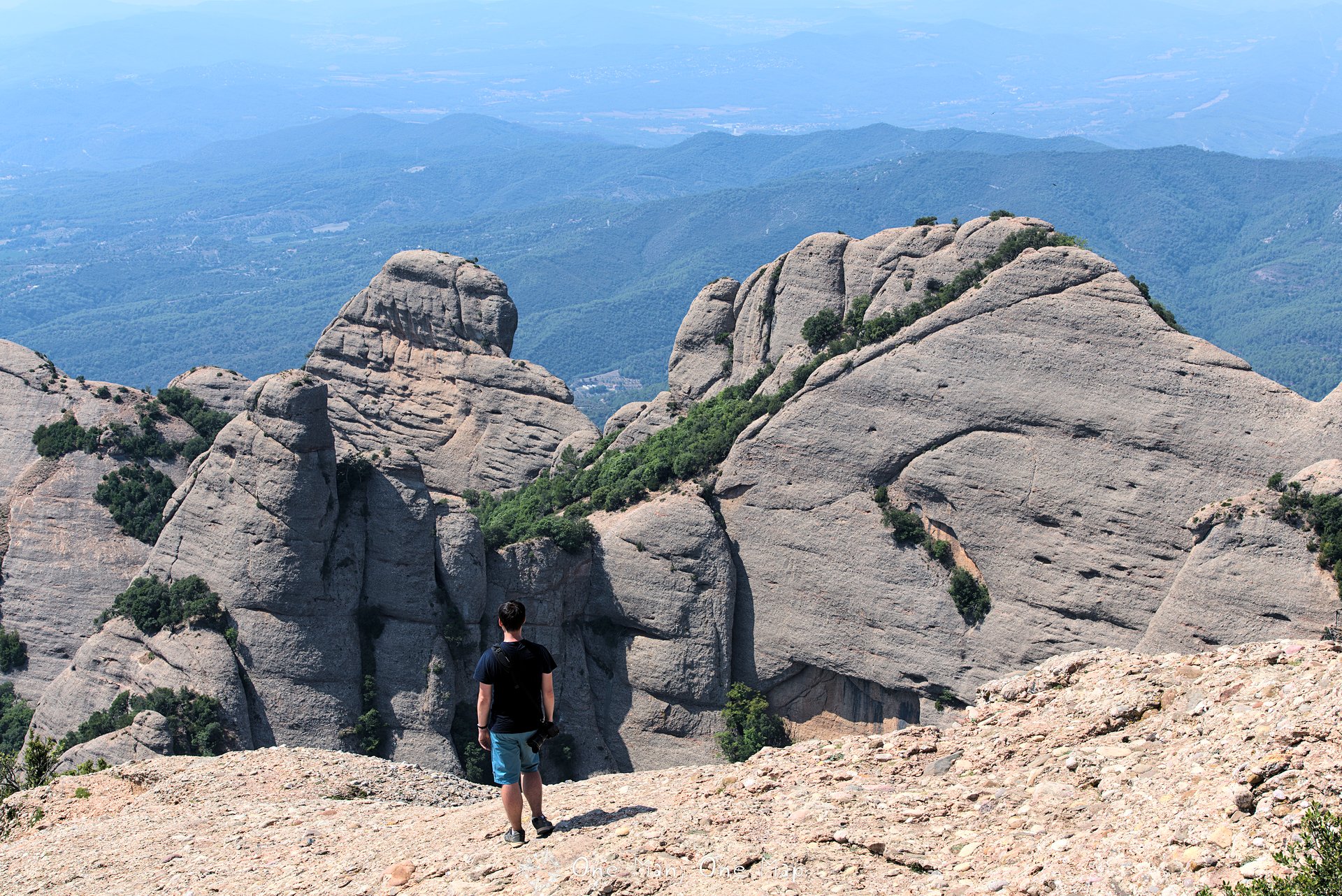
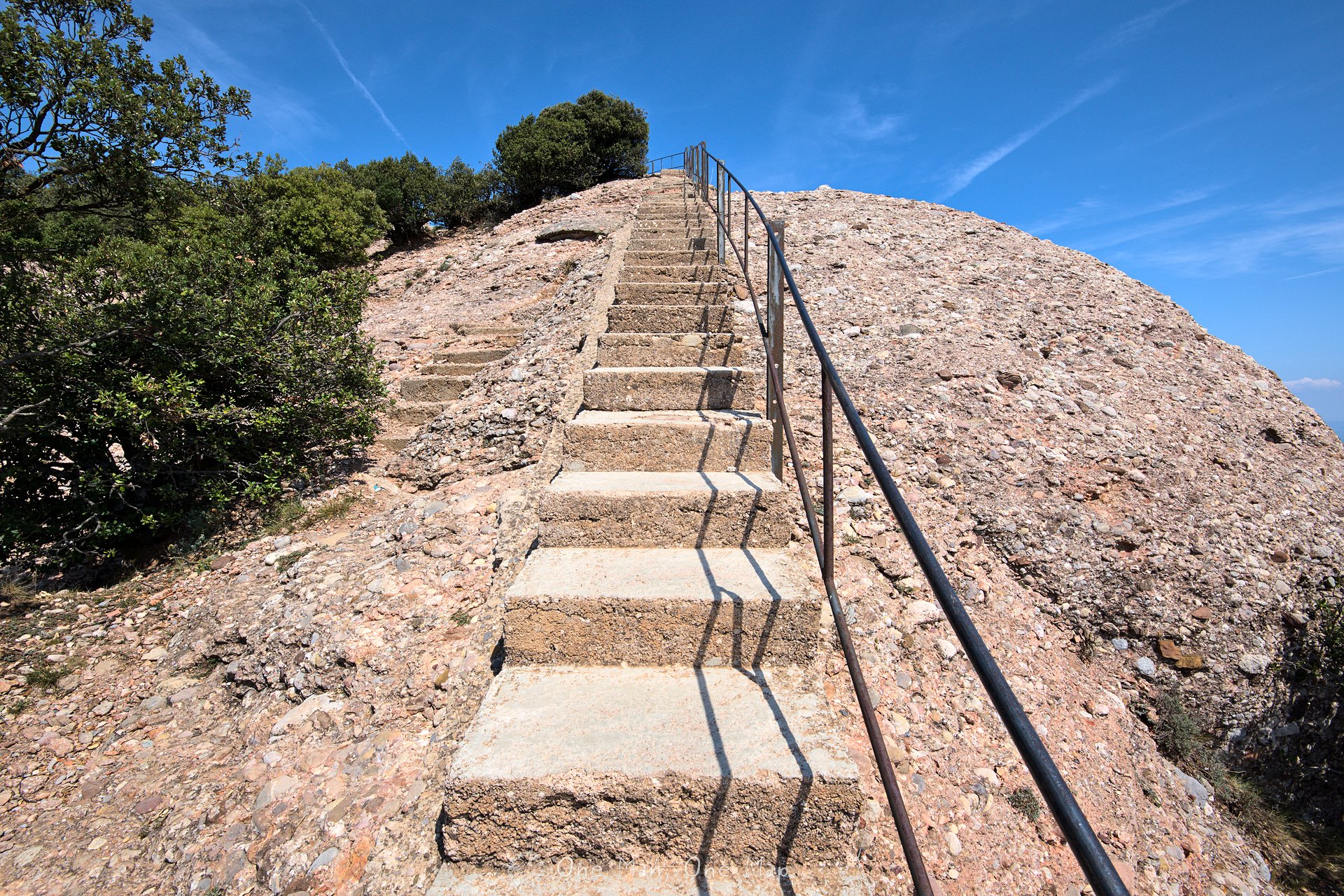
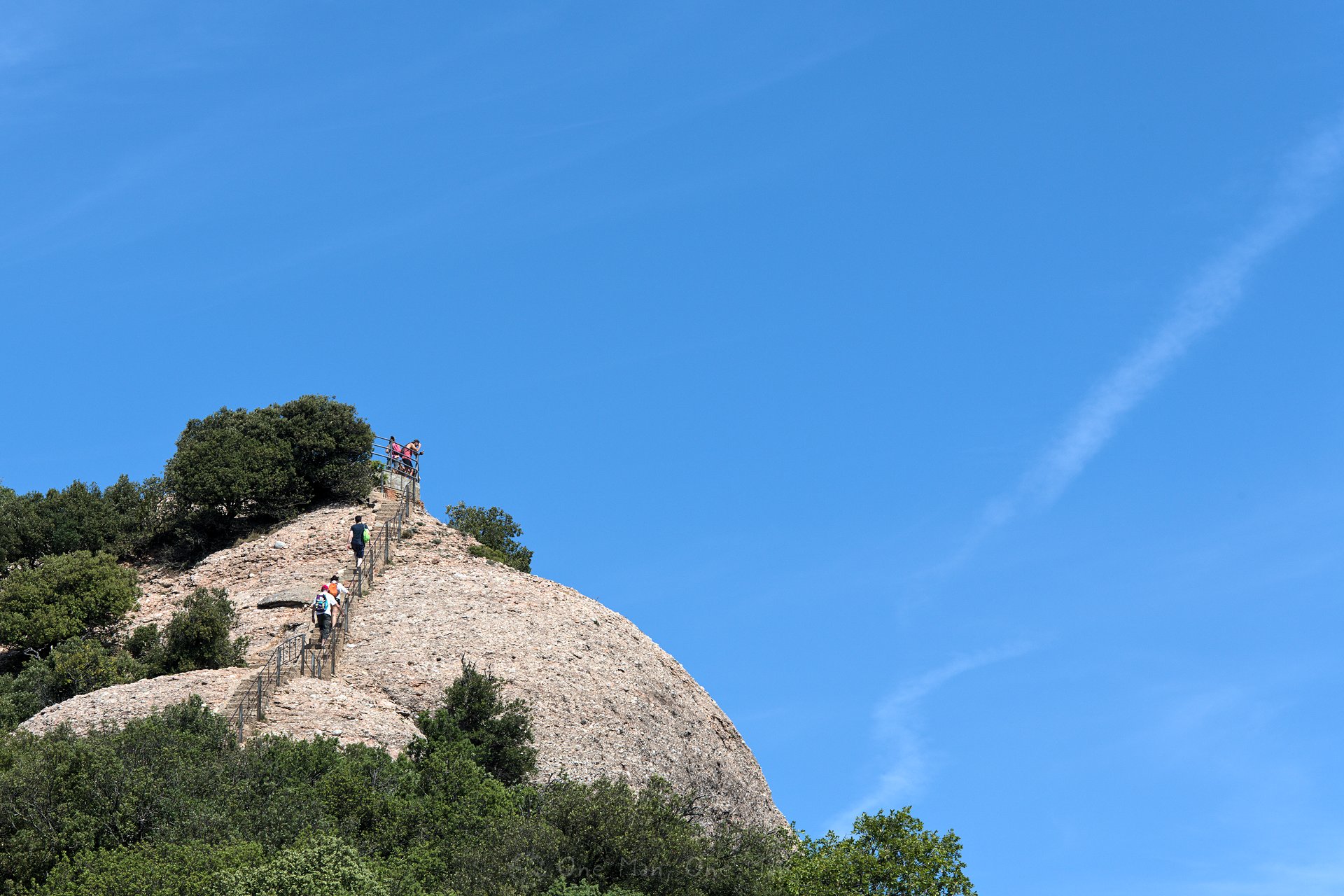
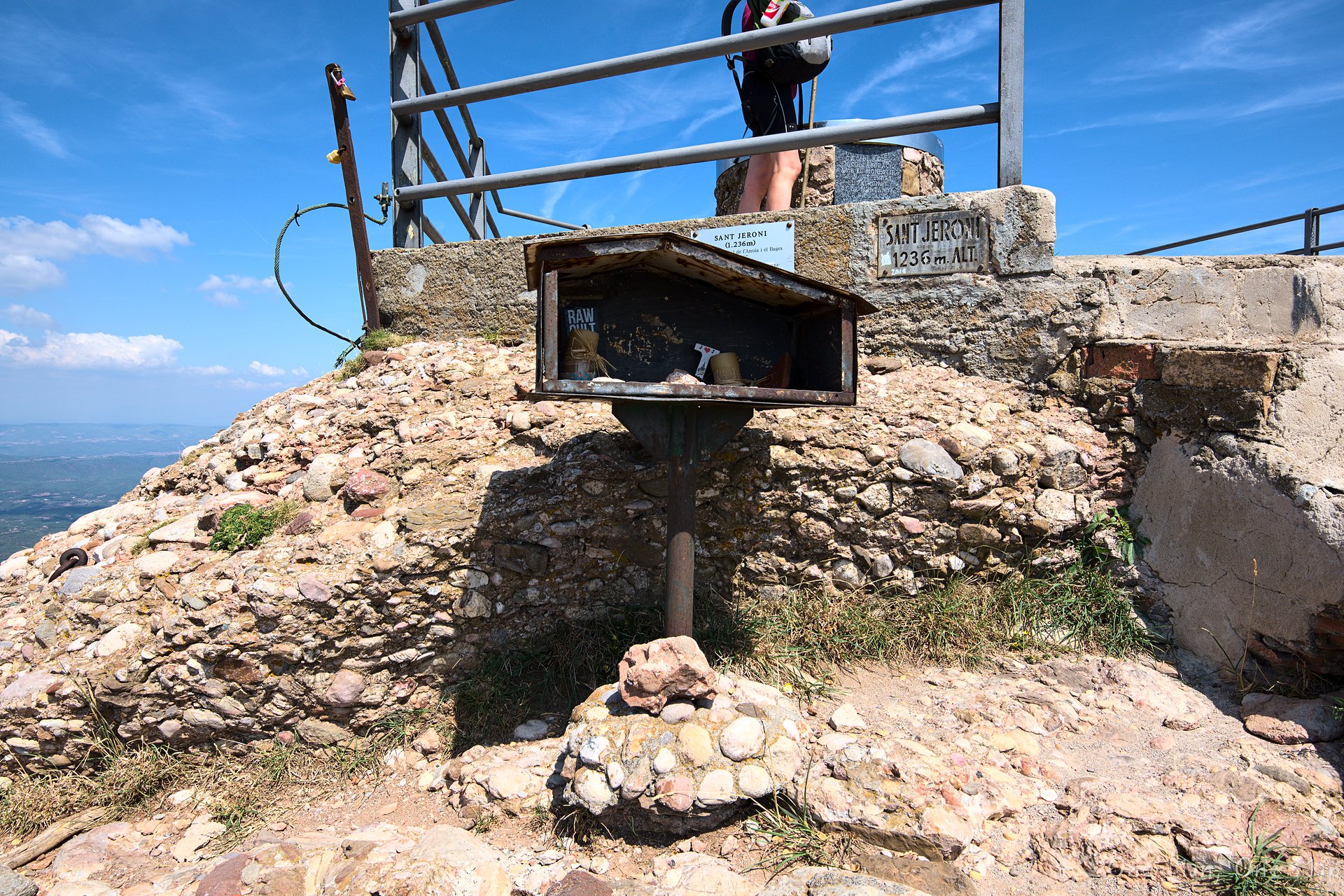
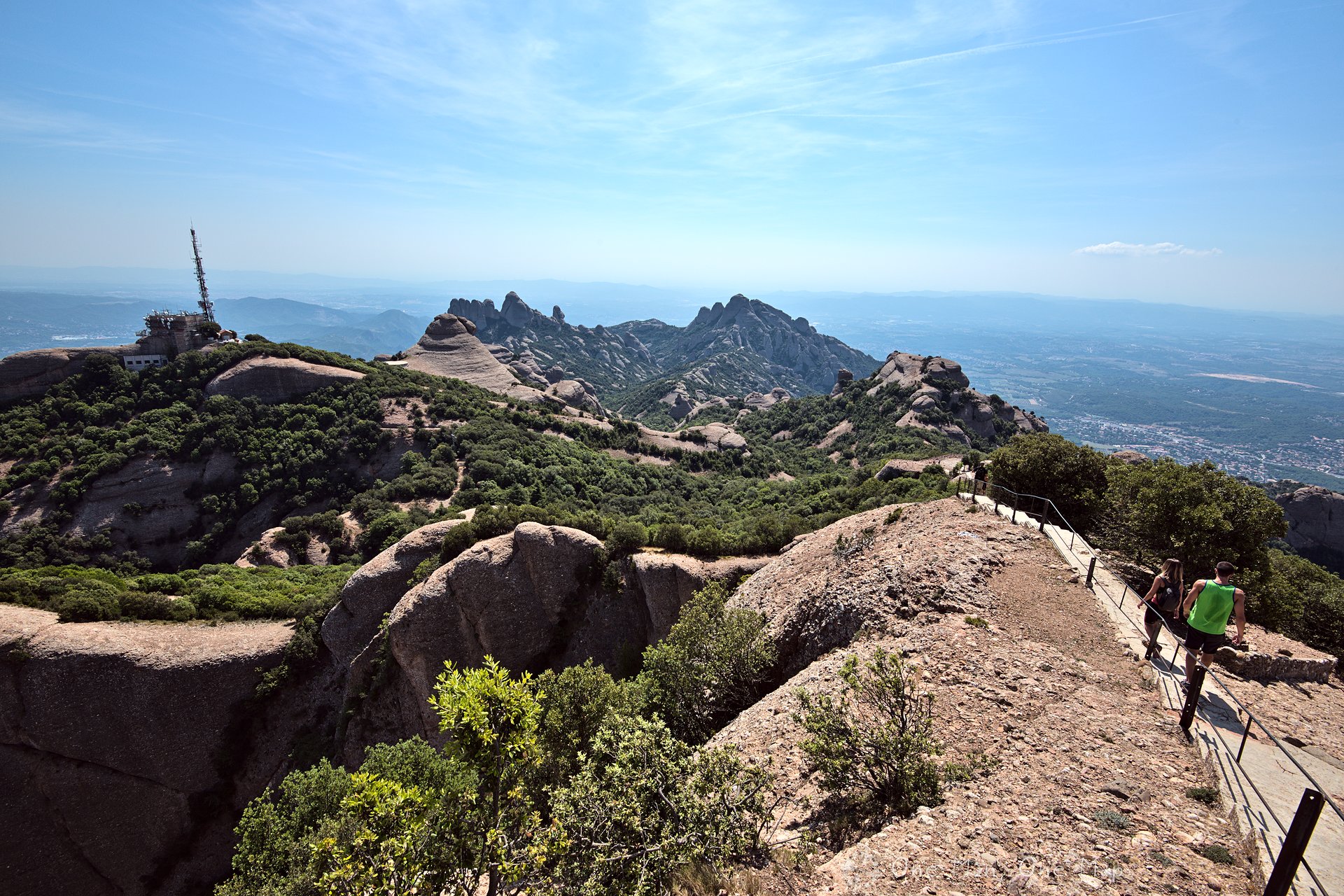
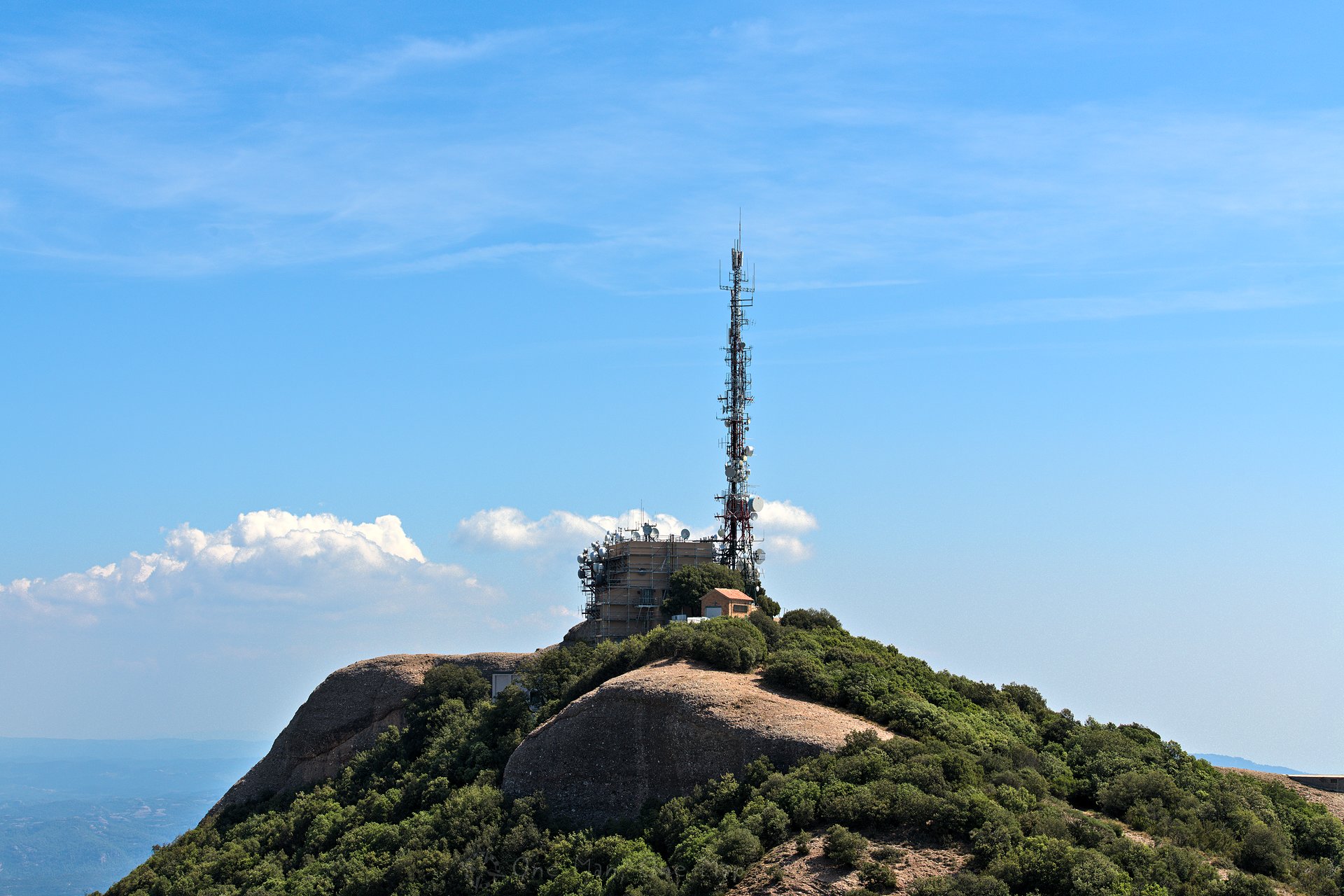
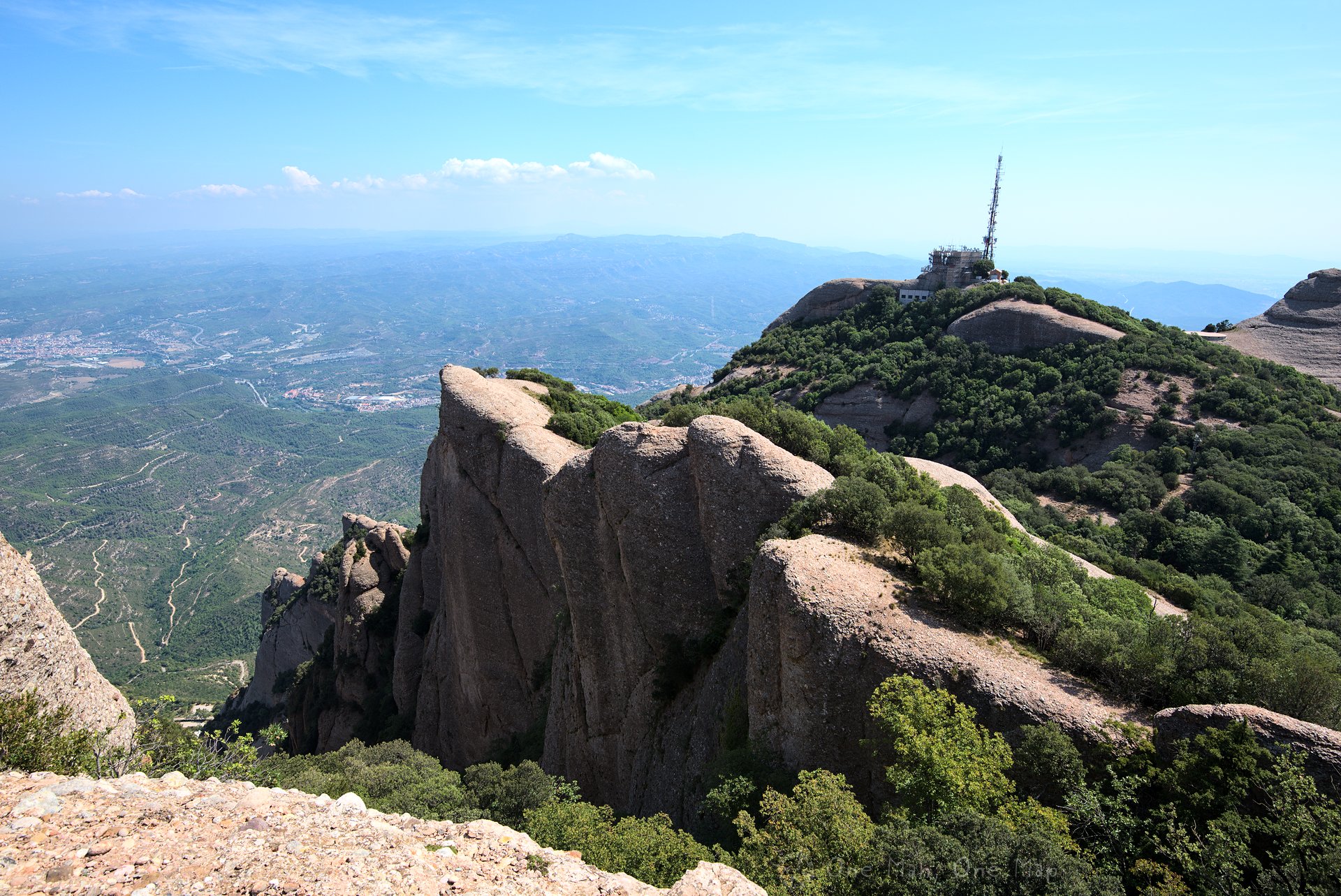
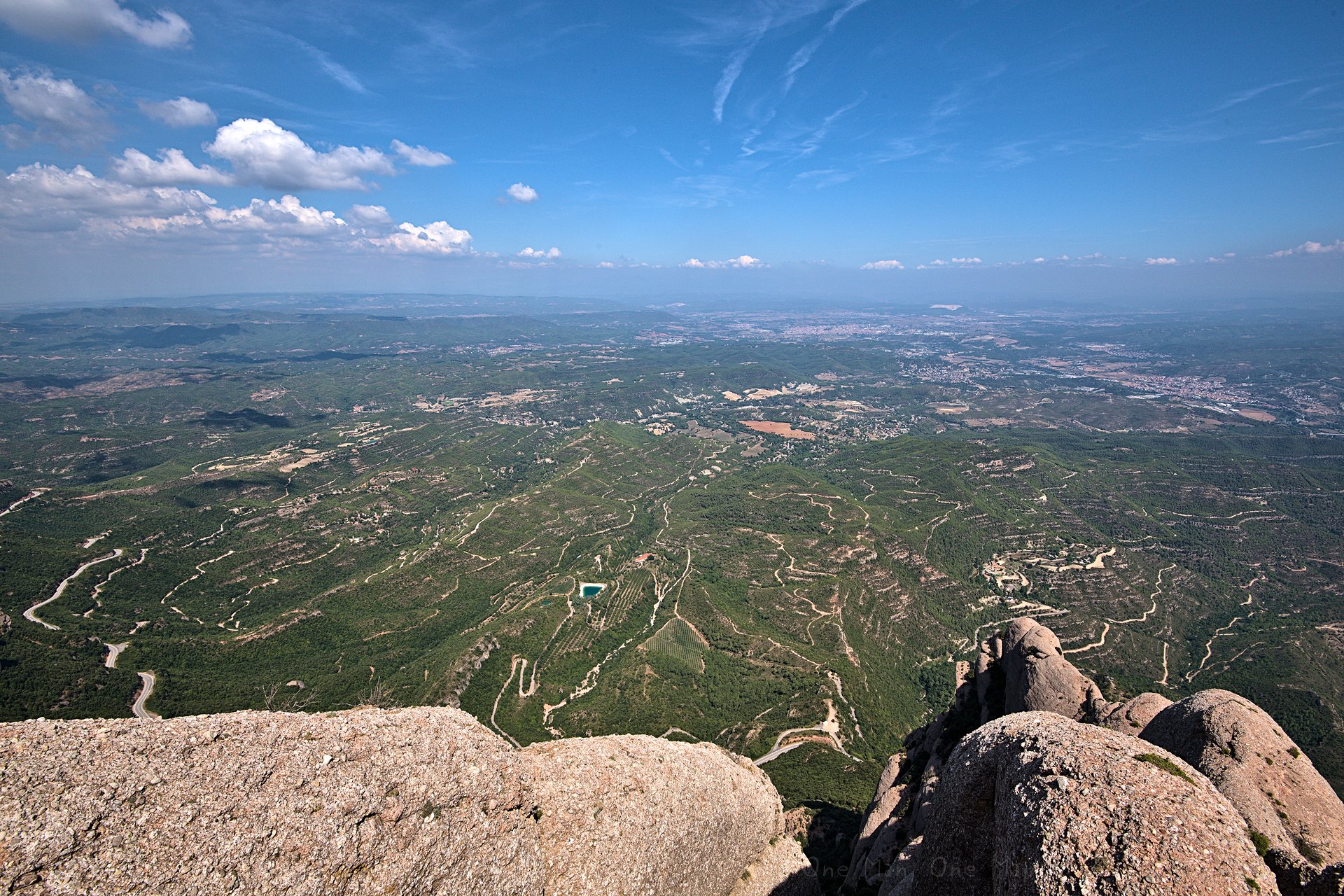
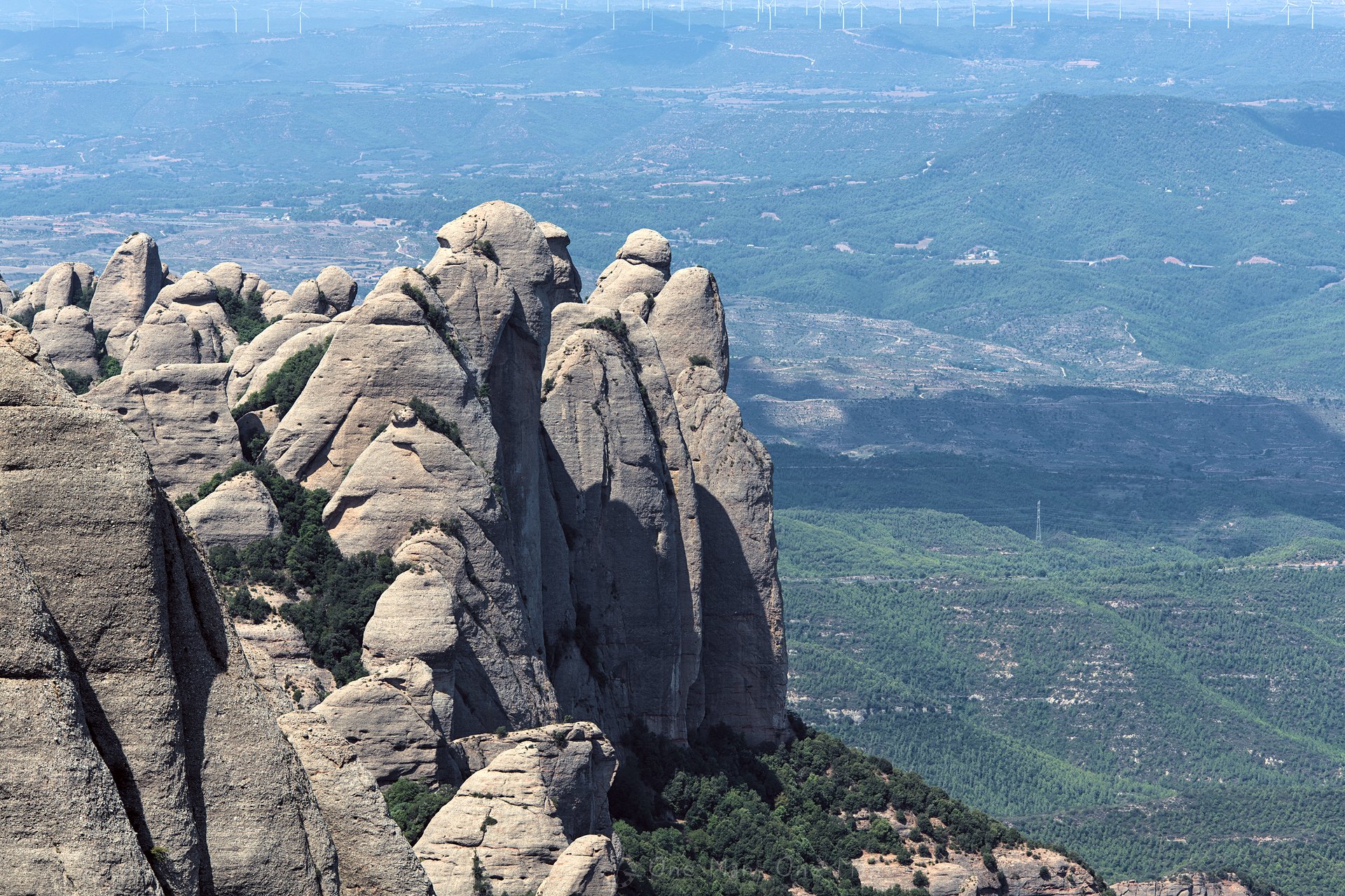
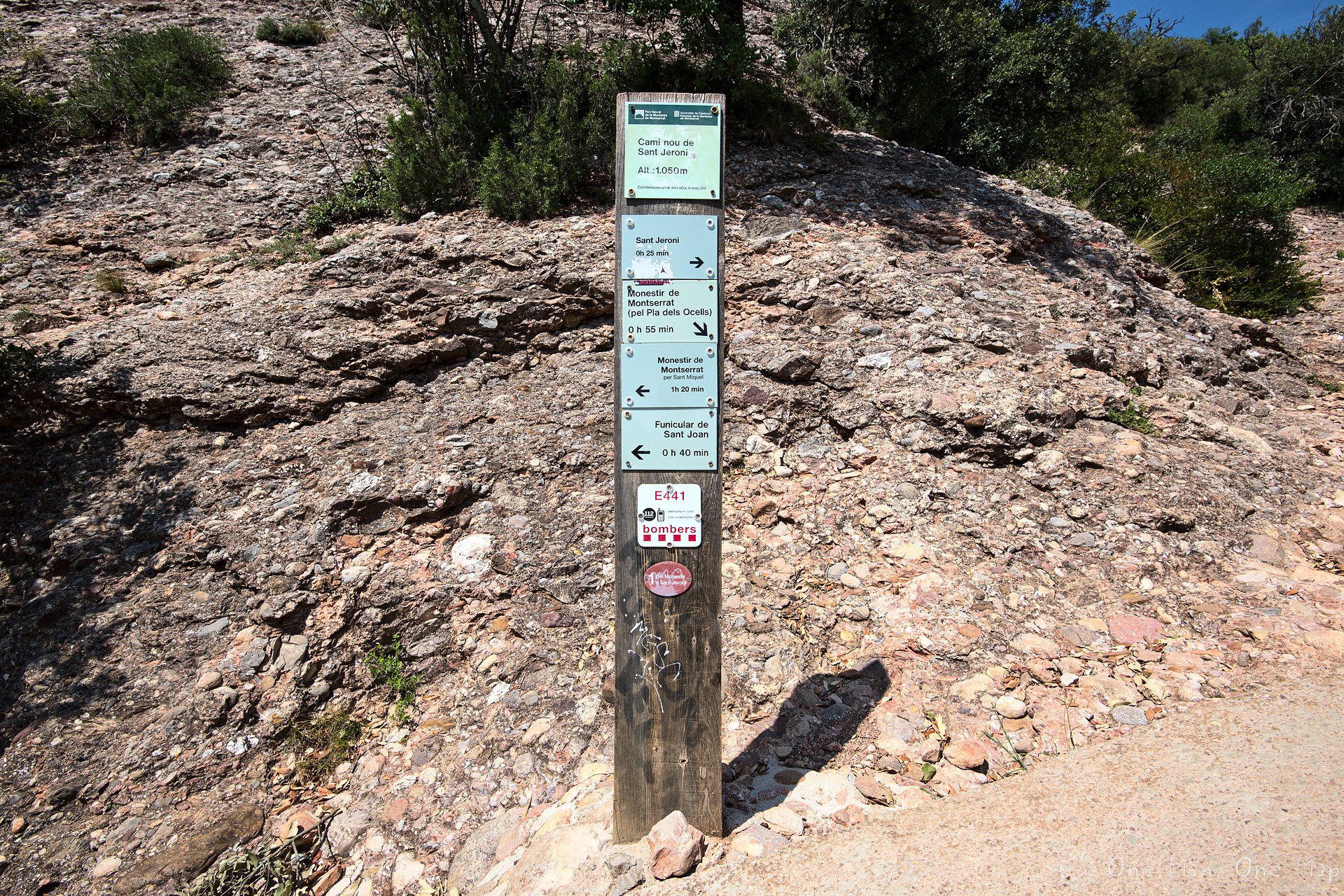
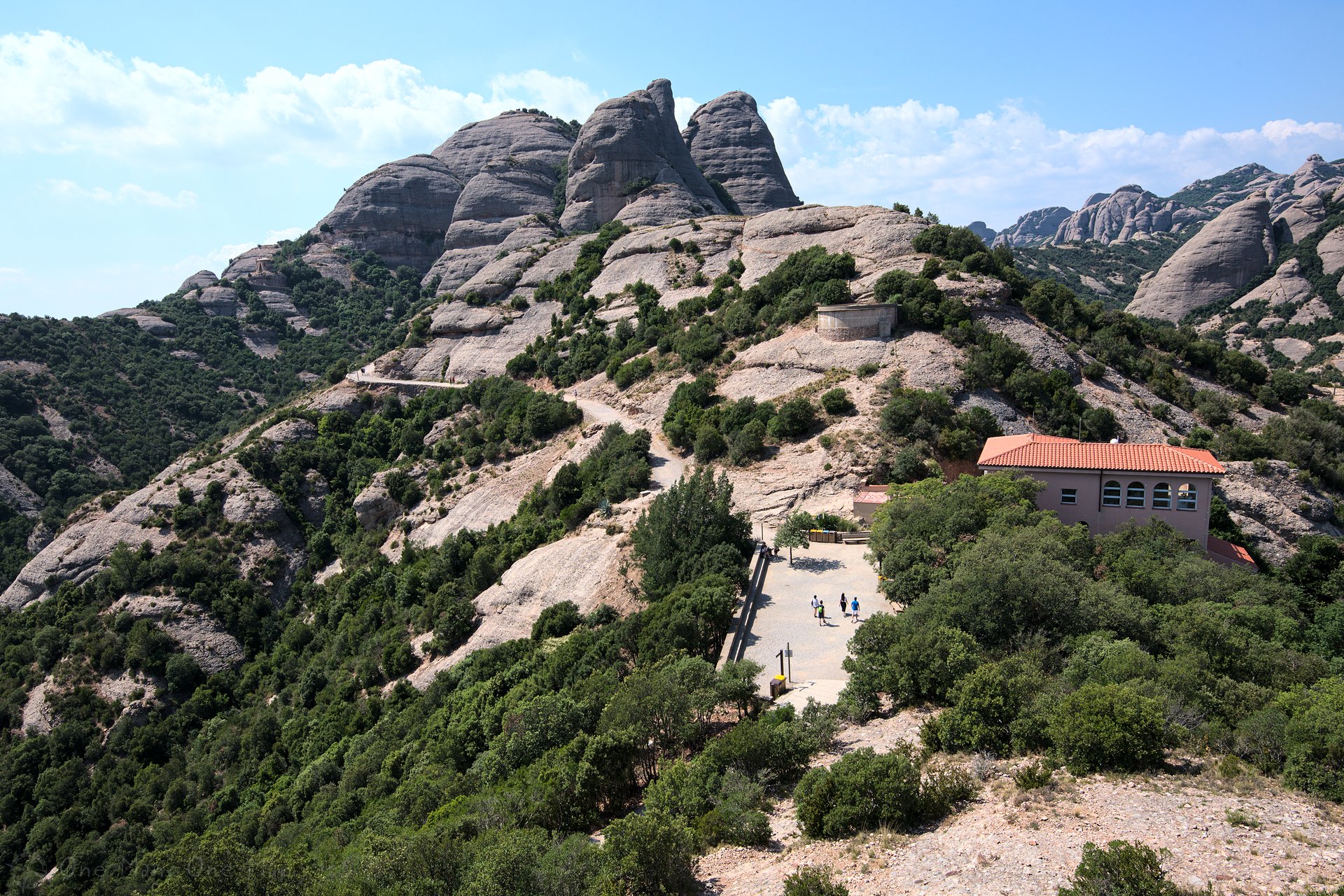
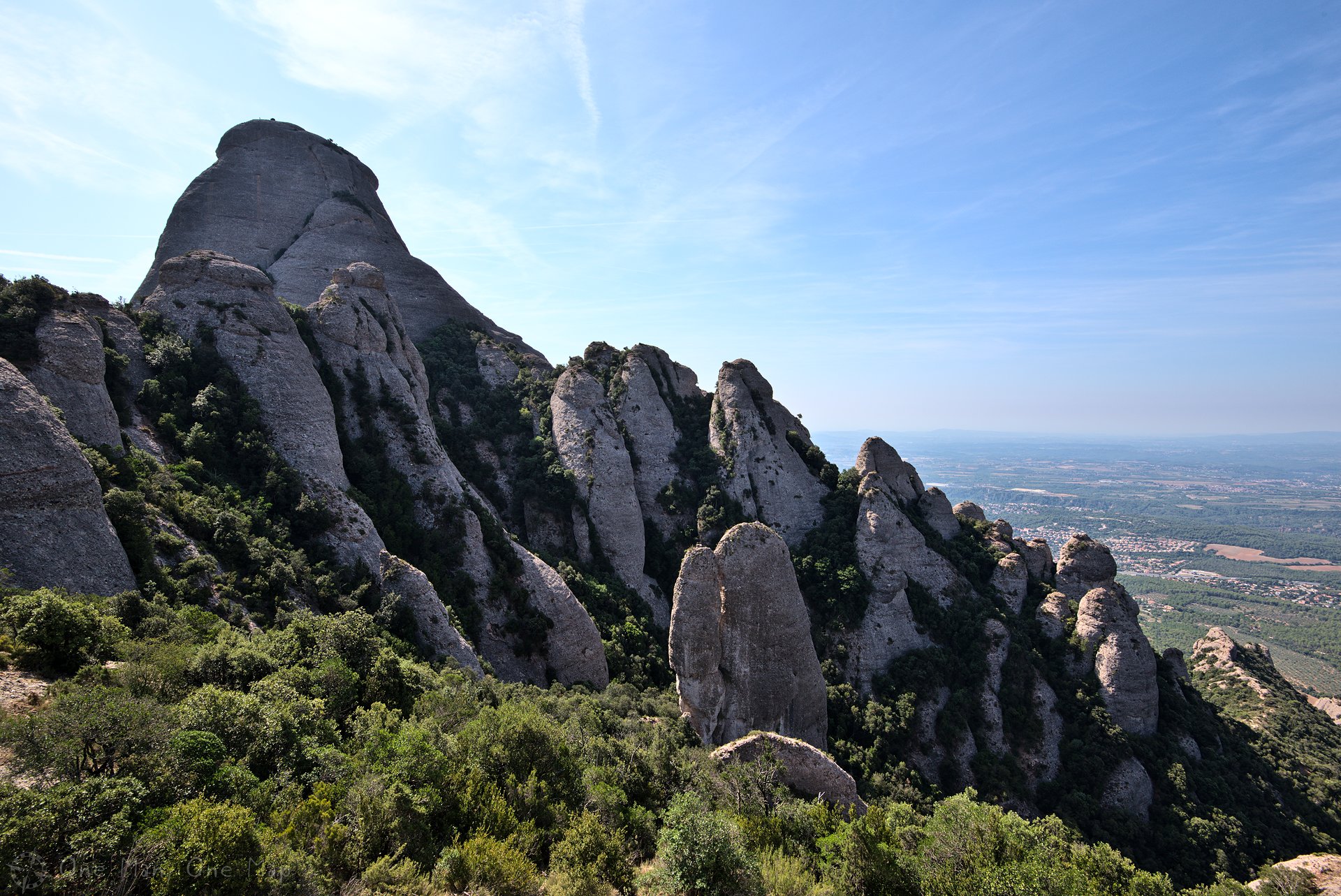
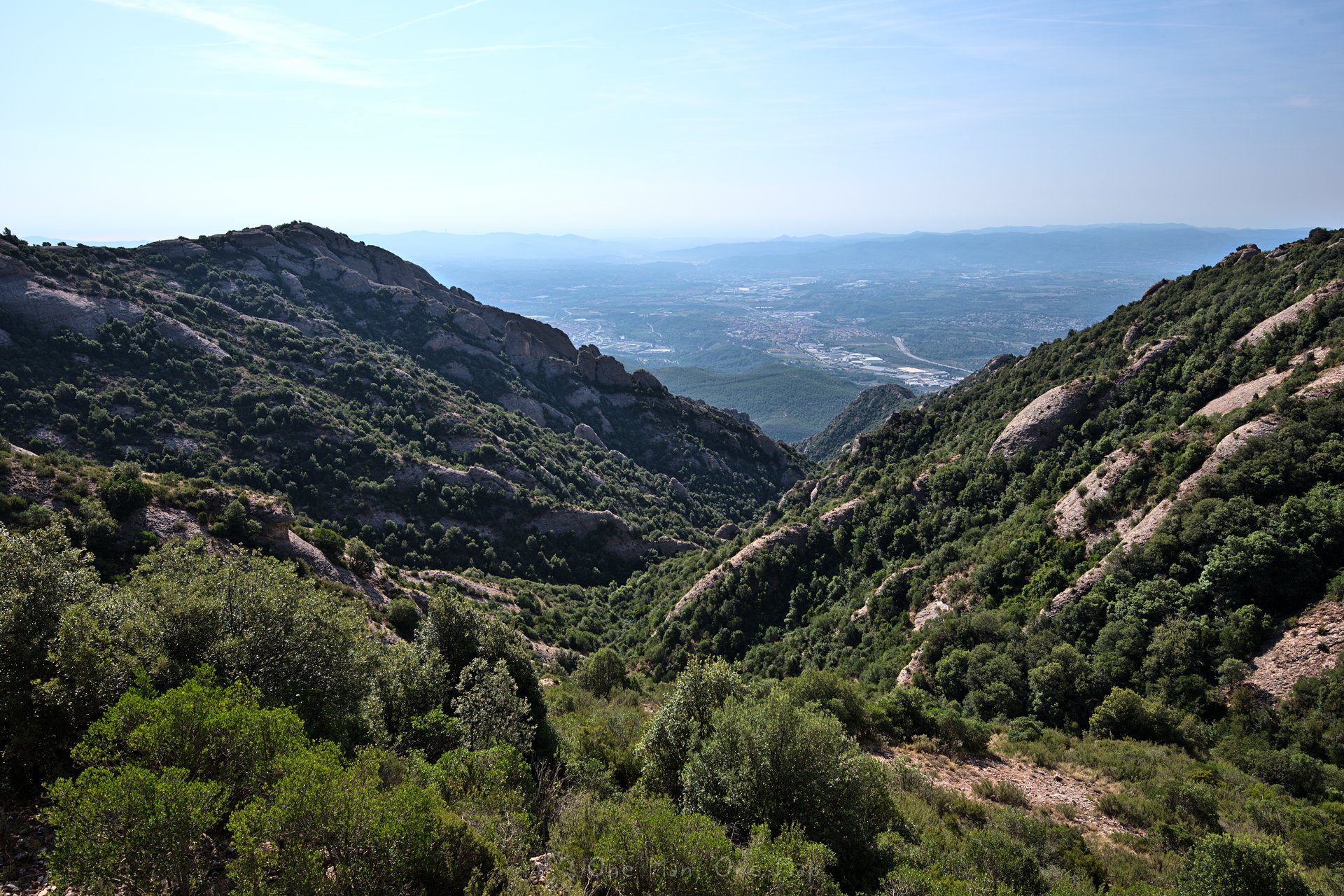
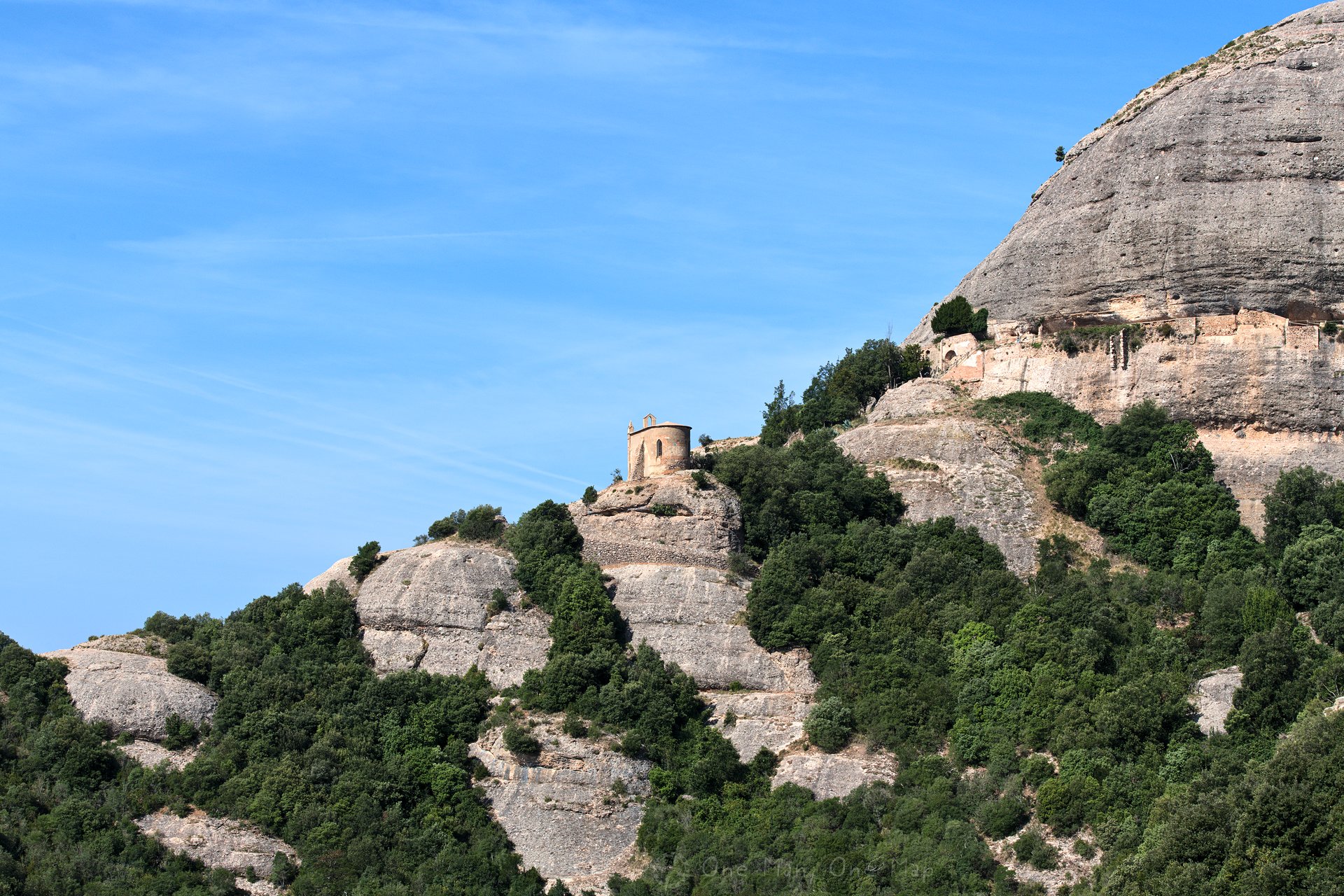
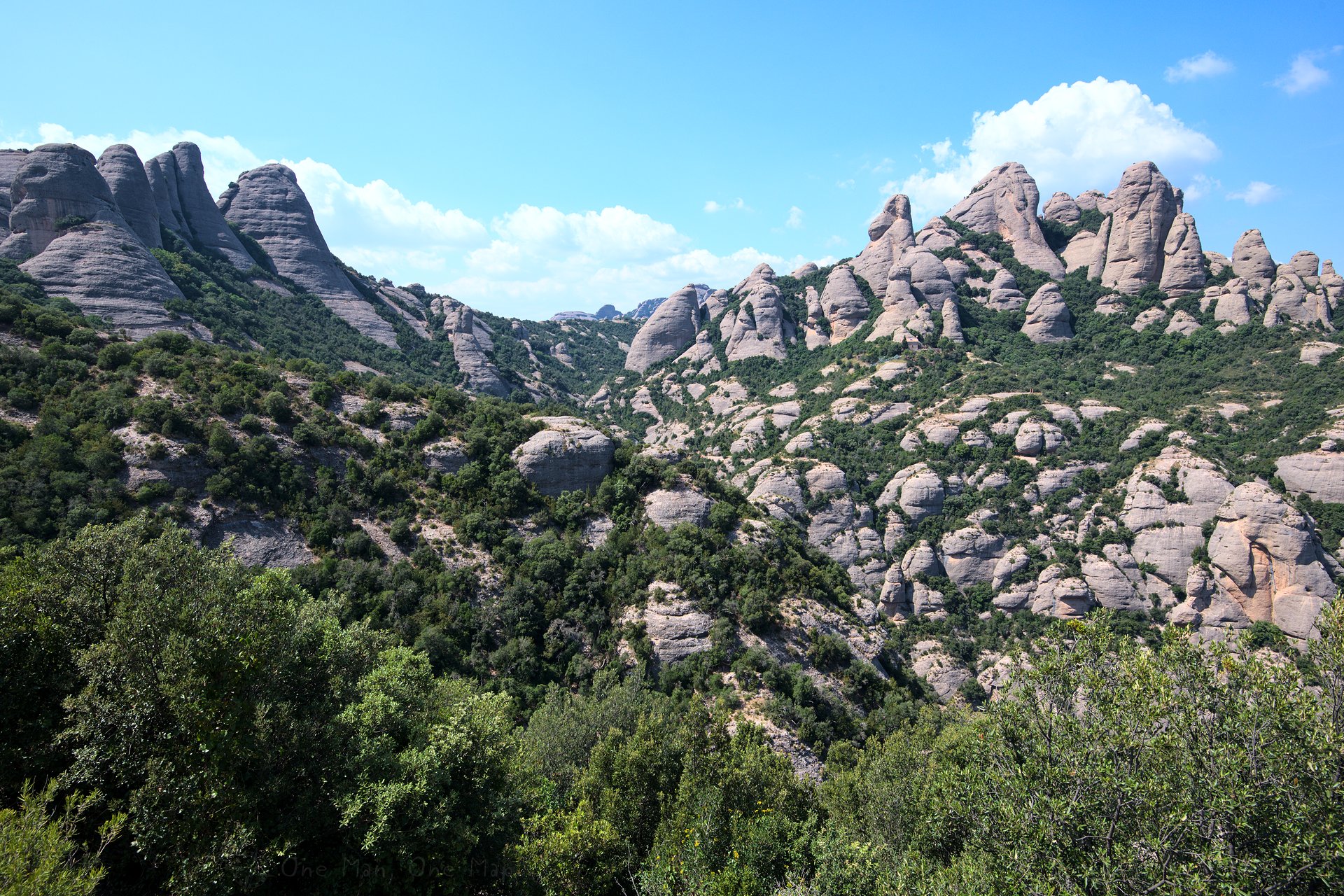
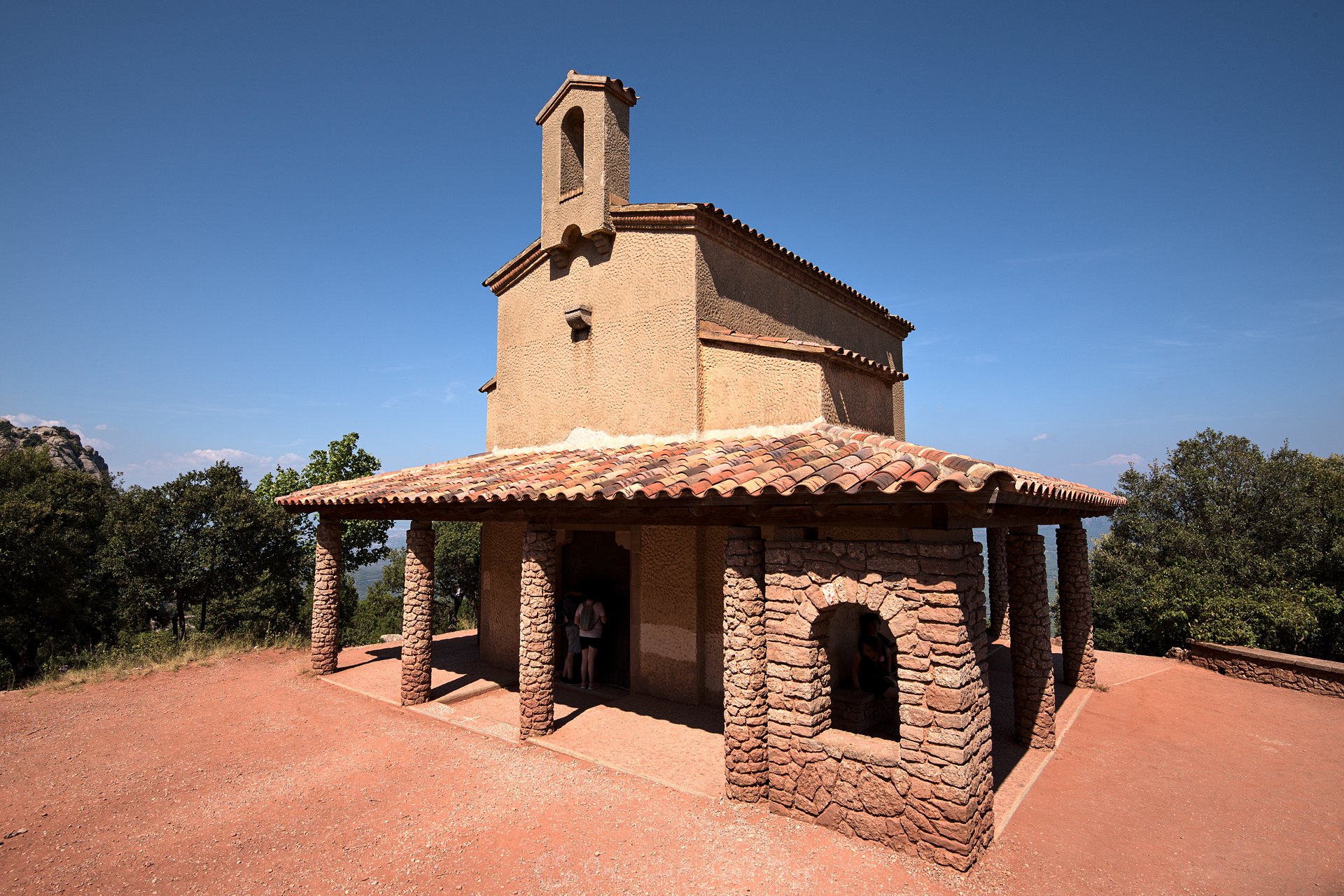
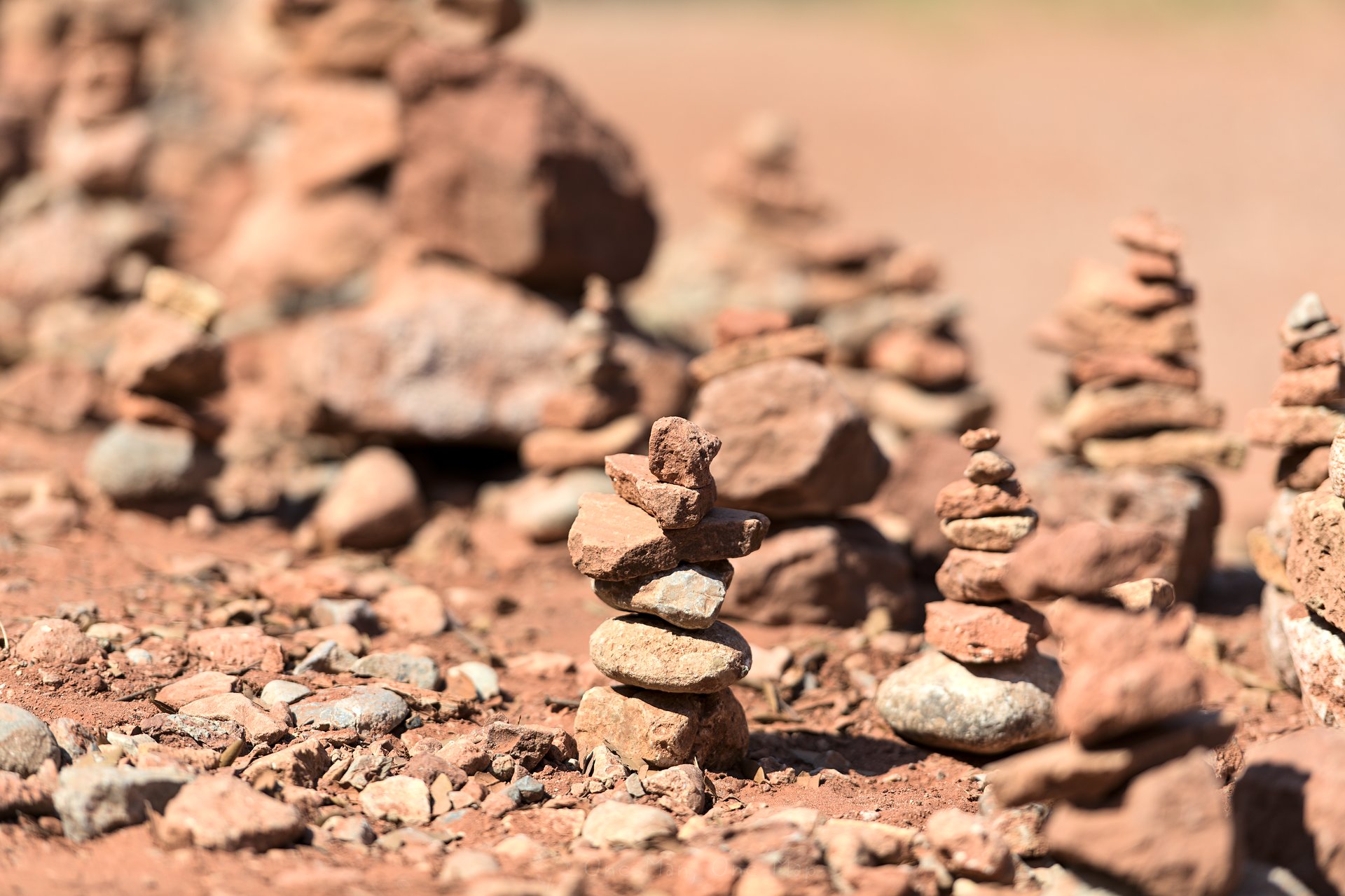

What a wonderful post! Thank you. Would love to return to Montserrat and hike to the Creu de Sant Miquel.